Barcelona is one of Europe’s most popular cities for visitors, and one of our favourite cities too. There’s loads to see and do, from the incredible architecture of Anton Gaudí, through to museums, UNESCO world heritage sites, markets, delicious tapas – and even a beach.
As you might imagine, it is not hard to fill your time when visiting Barcelona, even with three full days to play with. We’ve visited multiple times, and are always coming across new sites and things to do.
You should be aware that Barcelona is a fairly big city, with a number of fairly distinct areas. It does have a good public transport system, but obviously you want to spend more of your time sightseeing and less of your time on a bus or metro.
With that in mind, I’ve put together what I think is a good overview of some of the city’s main sights that will help you spend 3 days in Barcelona, either as part of a long weekend, or a longer European itinerary like this.
I’ve ordered the sights for each day by a logical order of how you might want to visit them and also put those sights first that you should visit earlier in the day before the crowds arrive, where possible.
Barcelona is very popular with visitors, and especially in the summer months attractions can become very crowded, so booking ahead where possible and turning up early are the key to a frustration free trip.
You might also want to consider looking into the Go Barcelona Pass, Barcelona City Pass, or Barcelona Card for your visit. These offer free and discounted admission, as well as skip the line access, travel options and various other perks that might make your visit easier.
For each attraction, I’ve highlighted which pass is best, and there’s a section on passes for Barcelona towards the end of the post. Jess has also written a comprehensive review and guide to using the Go Barcelona Pass, as well as a comparison of the main discount passes available in Barcelona, which are both worth a read.
Of course, an itinerary like this should just be a starting point for your plans, and at the end I’ve also added some optional sights that you might want to add in. You could also extend this itinerary over some more days if you really want to take your time exploring Barcelona. If you have less time, take a look at our suggested 2 day Barcelona itinerary.
Now, let’s take a look at our idea of the perfect way to spend 3 days in Barcelona.
Table of Contents
A 3 Day Barcelona Itinerary
Barcelona Itinerary: Day 1
The first day of our exploration focuses on the city centre of Barcelona, and everything here is easily walkable. It covers some of the more famous works by Anton Gaudí, plus one of the city’s most famous streets.
Casa Batlló
One of the most famous of Gaudí’s houses in Barcelona, Casa Batlló is also one of the most popular, so we definitely recommend you put this at the beginning of your day.
Even from the outside this property is intriguing, with the famous balconies on the building’s façade, which are reminiscent of Venetian masks.
Inside, there’s a stunning spine-like staircase and organic-feeling rooms which you can explore at your leisure before emerging onto the incredible roof terrace which is shaped to represent a dragon – one of Gaudí’s favourite icons.
As already mentioned, this is a popular spot. You can skip the ticket line by booking your ticket online in advance on GetYourGuide here. We recommend GetYourGuide for individual tickets as they usually include free cancellation up to 24 hours in advance of your visit, which can be great if your plans change for any reason. Obviously you’ll want to check the cancellation policy of any ticket before booking though to be sure.
Casa Batlló is also included on the Go Barcelona Pass, giving you free entry to this, and many other attractions on the itinerary. It’s also included on the 3 Houses of Gaudi pass.
Alternatively, you can get discounted admission with a Barcelona Card if you buy your ticket on the door, or by booking in advance if you have a Barcelona City Pass.
Casa Milá
Casa Milá, also known as La Pedrera, is a short walk from Casa Batlló, and is another of Gaudí’s houses in Barcelona – the last of his major civil works.
This one also has a famous façade, this time of undulating limestone, the stone-like look which earned it the nickname “La Pedrera”, which means the Quarry. This façade is self-supporting, freeing up the rest of the building from requiring load-bearing walls.
As soon as you enter the building, it will intrigue you. From the ground floor courtyard looking up there’s an incredible view of the inside of the building, with light pouring in from the roof to the interior apartments. As you go up the floors, you’ll explore some of the apartments that are open to the public, as well as the magnificent brick-ribbed loft space.
The highlight for many though is the roof terrace area, with its famous chimneys, skylights, and stairways. From here there are excellent views across the city, including to some of Gaudí’s other works, most notably the Sagrada Familia.
Casa Milá is also a popular stop for visitors. It’s a good place to use the Go Barcelona Pass, which has skip the line access to Casa Mila, meaning you don’t need to queue to get in here. It’s also included on the 3 Houses of Gaudi pass.
Again, you can get discounted admission with a Barcelona Card if you buy your ticket on the door, or by booking in advance when you buy your Barcelona City Pass. Alternatively, buy your tickets online in advance here.
Las Ramblas
Time for a spot of walking, and maybe all this sight-seeing has you hungry? Why not head past Plaça de Catalunya, and onto one of the city’s most famous streets for a stroll – Las Ramblas. Take a drink from the fountain at the northern end of the street, which will guarantee you’ll return to the city.
Then, head down the street for a spot of people watching and a wide range of outdoor dining options. Sure, they might not be the cheapest or most “authentic” options, but hey, you can get a pitcher of Sangria and watch the world go by, and what’s wrong with that?
La Boqueria
About half way down Las Ramblas you’ll come to La Boqueria, the city’s oldest and most famous market. This used to be just outside the old city wall, and has always been famous as the market that would have the items you couldn’t find elsewhere.
Today, the market is still popular with locals and visitors alike, and still has the reputation for having one of the widest choices of the city markets, with everything from meat and fish through to fruit, sweets and even food stalls.
It’s a good place to get a freshly squeezed fruit juice, to have a snack or just to admire the 19th century Modernista design, which is certainly worth the visit alone.
Mirador de Colom (Columbus Monument)
From Palau Güell, I suggest you continue your journey south along Las Ramblas until you get to the end, where you’ll be greeted by the sight of a large column, atop which sits a statue of Christopher Columbus, the famous Italian explorer largely responsible for opening up the Americas to European exploration.
This was a venture he achieved under the sponsorship of the Spanish monarchs at the time, and the statue commemorates his first voyage to the Americas.
Originally built for the Barcelona Universal Exposition in 1888, today the statue serves as both monument and tourist attraction, with the bonus that you can head up inside it for good views of the southern side of the city, including along the port and an excellent aerial view up Las Ramblas.
There’s an entry fee to the monument. Tickets can be bought in person. You get a discount if you have a Barcelona Card and if you book in advance if you have a Barcelona City Pass.
Las Golondrinas Boat Tour
At the end of Las Ramblas where you find the Columbus Monument is the marina area of Barcelona. So far the day has involved a fair bit of walking, so this might be a good opportunity to rest and let the scenery float by, perhaps accompanied by a coffee or something stronger.
From the port area, a number of operators offer boat tours of varying length which will give you a different perspective of Barcelona harbour.
We took the 90 minute boat tour with Las Golondrinas, which is included for free with the Go Barcelona Pass (discounted for holders of the Barcelona Card or Barcelona City Pass).
There are a number of operators though with different tour lengths and routes, depending on what you want to see.
Barcelona Aquarium or Catalonia History Museum
If a boat ride isn’t for you, or you want to keep exploring once the ride is finished, there are a couple of great options at this end of town.
Depending on your interests, you could visit the Barcelona Aquarium or the Catalonia History Museum (the former is free with the Go Barcelona Pass and both are discounted with the Barcelona Card & Barcelona City Pass).
Alternatively, you can buy tickets for the Aquarium here, and the history museum here.
We’ve been to both, the former is an excellent Aquarium and a good option for families. The Catalonia History Museum will take you through the full history of the region and its people, from prehistory right up to the modern day. It’s a fascinating insight into the region, and will keep you occupied for some time.
And that’s the end of a full first day in Barcelona! Time for an evening drink and some food, before we kick off our second day of our three day Barcelona itinerary.
Barcelona Itinerary: Day 2
Our second day in Barcelona will have you exploring the more north-eastern part of the city and visiting some of Barcelona’s highlights, starting with the famous:
Sagrada Familia
Without a doubt Gaudí’s masterpiece, this massive basilica was the work that Gaudí was labouring over when he tragically died. Construction started in 1882, although by the time of Gaudí’s death in 1926 it was still less than a quarter finished. At time of writing, it’s still not complete.
This doesn’t mean you can’t visit though. Despite this being an active construction zone, the majority of building is open to the public.
It’s another popular stop, so again we suggest you pencil this in as the first stop of the day – perhaps taking in sunrise from the park over the road, before heading in.
Entry is timed, and tickets sell out well in advance, so you will definitely want to buy your ticket online in advance and pick a time slot that suits you. You can do that on the official website here, as well as on Tiqets here and GetYourGuide here.
Note, the official website tends to have the lowest prices, but we suggest also checking out GetYourGuide as the majority of their tickets include the option to cancel up to 24 hours in advance of your visit, which can be worth a slightly higher price in our opinion.
Note that as of 2022, tickets for entry prior to the last two hours of opening are a little more expensive, but do include an audioguide, which is well worth it.
Again, as it gets later in the day the building gets more crowded, so we definitely recommend visiting earlier in the day if you can. There’s also the option to take a guided tour of the cathedral.
Holders of the Barcelona Card get a discount on tickets, however to our knowledge this can only be redeemed when purchasing tickets in person, not online.
A number of passes include entry to the Sagrada Familia. The Go Barcelona Pass includes a guided tour, which is an excellent option for learning more about what you are seeing. The Barcelona City Pass also includes the Sagrada Familia, and lets you book your entrance time online before you go.
Another option is the Gaudi bundle, which includes pre-booked timed entry to the Sagrada Familia and Parc Guell, as well as an audioguide that covers both attractions.
See more on discount passes in Barcelona in the section on saving money in Barcelona below. We also recommend reading our guide to visiting the Sagrada Familia, which has everything you need to know to plan your visit.
Recinte Modernista Sant Pau
A relatively new opening to Barcelona visitors, the Recinte Modernista Sant Pau is quickly becoming one of Barcelona’s more popular attractions.
Originally built as a hospital, this series of buildings is one of the finest examples of Art Nouveau architecture in Europe, and has been awarded UNESCO world heritage status alongside the Palau de la Musica Catalana in the Gothic Quarter.
You can explore this complex and go inside a number of the buildings. It’s just a stunningly beautiful place to walk around and experience, both inside and outside, and is only a 15 – 20 minute walk from the Sagrada Familia. Well worth doing.
Free to Go Barcelona Pass holders, discounted admission for Barcelona Card holders. You can also buy tickets online in advance here.
Gaudí Experience 4D
Next on our itinerary is a trip up towards Park Güell. On the way, we suggest you might want to pop into the Gaudí experience, an interactive exhibition that will take you through the life and works of the architect responsible for so many of Barcelona’s sights. There’s an overview of some of his most notable works, as well as a 4D cinema.
Free with the Go Barcelona Pass, or you can buy a ticket online in advance here.
Park Güell
Situated on the hills towards the north of the city, Park Güell is another of Gaudí’s works. This is a little bit different though, being as it is a large park area with a number of installations to explore and visit.
Originally planned as a housing development of upper class properties offering spectacular views, the vision of sixty homes was never realised, with only two actually completed.
However, many of the features envisioned by Gaudí for the public spaces were created, including the entrance houses, main terrace area, mosaic serpentine bench, and colonnaded footpaths.
There is also a house museum you can visit on site which was Gaudí’s home for the last twenty years of his life. This has a separate entry fee, but if you are interested in seeing how he lived, is worth the visit.
Park Güell used to be free to visit, but its overwhelming popularity led to a ticketing system being put in place.
This has timed entrances, helping to keep the park more pleasant for everyone to visit. You can visit parts of the park without a ticket, but the key attractions, known as the Monumental Zone, do require a ticket.
You will want to book tickets for Park Güell online in advance, which you can do on GetYourGuide here, or on the official site here. This is definitely recommended to be sure you are not disappointed or have to wait when you arrive. If you do this, be sure you arrive at the entry time specified on the ticket as otherwise you won’t be able to get in.
Holders of the Barcelona City Pass can also pre-book their timed entry to Parc Guell online, and entry is also included as part of this card. Holders of the Go Barcelona Pass can visit Parc Guell as part of a free guided tour.
If you don’t want to invest in one of these passes but still want to visit both Park Güell and the Sagrada Familia, you might consider a Gaudi bundle, which includes pre-booked timed entry to both attractions, as well as an audioguide that covers both attractions.
And that sums up our second day of exploration in Barcelona! It might seem that there’s not so much on this day, but the attractions will take you a while to visit, and you will have to factor in transit times between them, so we’d suggest not trying to add too much more to today in case you run out of time.
Barcelona Itinerary: Day 3
The third day on our Barcelona itinerary has us starting in the Gothic Quarter, and then heading up above the town to visit a castle and a number of Barcelona’s most popular museums, finishing off with a spectacular free sound and light display. But first, we start with the:
Chocolate Museum
What better way to start the day than with chocolate? And given that your entry ticket to Barcelona’s chocolate museum is actually a real bar of chocolate, you can’t fail to be happy when you visit.
When you do, you’ll learn all about the history of one of the world’s favourite treats, including how it came to be so popular in Europe, how it is made, and some of the culture that grew up around it. Barcelona was one of the major ports for chocolate to arrive into Europe, and it played a key role in the economy of the city.
Also fun are the many chocolate statues and displays made of chocolate. Definitely a fun way to start a full day of exploration in Barcelona!
This one is free for Barcelona Card holders, or you can buy your ticket online in advance here.
Gothic Quarter
From the Chocolate Museum you’re going to head deep into the warren of narrow streets that is the Gothic Quarter.
This is the oldest part of the city, and is where some of the highlights of Barcelona are tucked away. I’d definitely recommend having a paper map handy when you start to explore – the high buildings and narrow streets mean GPS signals can get easily confused.
Whilst wandering the Gothic Quarter is an experience of itself, there are a number of attractions within that you should check out. First of these, coming from the Chocolate Museum, is the excellent Picasso Museum, which celebrates the early part of the artists life and work, as well as housing some of his later work. A must for fans. You can book a guided tour of the museum here.
From here, you can also visit the UNESCO world heritage listed Palau de la Musica Catalana. You can book tickets for this online here, or buy them in person at the box office. If you have a Barcelona Card, it’s good for a 20% discount on the tour price, but only when purchasing tickets in person.
A good option is also to visit the Palau de la Musica for a performance. You can see all the upcoming performances and book tickets for them here.
Heading further west in the Gothic Quarter, you’ll find yourself at Barcelona’s massive gothic Cathedral. This is free to enter, and worth popping into.
Next to it is the Gaudí Exhibition Centre, the first museum entirely dedicated to the works of Anton Gaudí. You can learn all about the architect and his architecture through images, models, audio-visuals and documents, and it’s a fascinating journey through his work.
Montjuïc Hill Attractions
We’re now going to head up Montjuïc Hill, which has a number of attractions atop it. Depending on your interests and how much time you have, you will probably want to pick a few of these rather than try to rush around all of them.
Montjuïc Castle
First on my list is the large fortress atop the hill, Montjuïc Castle. This huge fortress has played a key role in the history of the city over the last few hundred years, serving as a Spanish control over the potentially unruly Catalan city, as well as a prison and execution centre.
Today the castle is open to visitors and you can wander the huge walls, take in the views across the city skyline, and think back to darker times. There’s an entry fee, although it’s free to visit on Sunday afternoons.
Poble Espanyol
If you’re interested in learning about the different regions of Spain, and in particular their architecture and food, then a visit to Poble Espanyol should be on your list.
This is a huge open air architectural museum, built in 1929, which consists of 117 full-size buildings representing fifteen different regions of Spain, many of which are replicas of actual buildings. It’s also home to local artists, restaurants and shops, and you can see everything from glass blowing to jewellery making.
Again, you could spend a few hours just wandering around here as there is a lot to see and do. It also regularly hosts concerts, gastronomic festivals and other events.
Free to holders of the Go Barcelona Pass, discounted admission for Barcelona Card & Barcelona City Pass holders. You can also book a ticket online in advance here.
Joan Miro Foundation
Fans of Barcelona-born Joan Miró will definitely want to stop in at the Joan Miró Foundation on Montjuïc Hill. Created by the artist himself with the aim of promoting the work of young experimental artists, the museum displays a large number of Miró’s creations, stretching throughout his career.
The purpose built building is also an impressive and logically laid out structure, that will guide you through the artist’s works. There’s also a library on site which is home to Miró’s book collection.
There’s an entry fee, Barcelona City Pass holders get discounted admission. You can also book a ticket online in advance here.
National Museum of Catalunya Art
An imposing building with a spectacular view over the city, the National Museum of Catalan Art (MNAC) is a must-visit for anyone with an interest in the art of the Catalonia region.
It has art of various styles from across the centuries, including an impressive collection of romanesque church paintings.
The building itself is also quite spectacular, in particular the Oval Hall, a massive event space which houses one of Europe’s largest organs. You can also take the lift to the top floor to wander on the roof, which offers excellent views of the city.
There’s an entry fee, Barcelona City Pass holders get discounted admission. You can also book a ticket online in advance here.
Magic Fountain
The last entry on our final day of our three day Barcelona itinerary is the Magic Fountain, which you can see from the steps in front of the National Museum of Catalan Art.
This fountains runs a spectacular sound and light show in the evenings which is a real treat to watch as the water displays synchronise with the sound and light.
Built in 1929 for the International Exhibition, and restored for the 1992 Barcelona Olympic games, this is definitely one you won’t want to miss. The schedule depends on the time of year – you can see it here.
Barcelona Itinerary: Extras
There’s a lot to see in Barcelona beyond the above, and I wanted to highlight a few of our favourite spots. If you have a bit more time in Barcelona, or simply want to swap a few things around in the itinerary, the below items should definitely be in your list.
Take a Walking tour or Segway tour
If you buy a Go Barcelona Pass, you’ll find it comes with free walking tours of Barcelona and a Segway tour of Barcelona. We took advantage of the free walking tour, and chose a three hour tour around the highlights of the Gothic Quarter and Las Ramblas.
This was an excellent way to learn a bit about the history of the city and see some of the main attractions with a local.
If you do a tour like this, we’d suggest scheduling it early on in your trip as it will help orientate you to the city – plus you can ask your guide for tips and advice on things like local restaurants, bars and nightlife.
See a later section of this guide for tips on walking tours in Barcelona we recommend.
Palau Güell
Just off Las Ramblas you’ll find the Palau Güell, one of the earlier works by Gaudí in the city, and one where you can see many of his architectural visions coming into focus.
This is strikingly obvious as soon as you see the building from the outside, with its hugely impressive twin front doors in Gaudí’s famous parabolic arch shape.
These were designed to be large enough to accommodate a horse drawn carriage, with one door being for entering the building, and the other for exiting.
Once inside you’ll have the opportunity to see many of the rooms inside, including the central hall and the bedrooms, and of course, the roof terrace. This latter place is a popular spot to see the sunset, depending on when you visit.
You can buy a ticket in advance here. It’s also included on the 3 Houses of Gaudi pass.
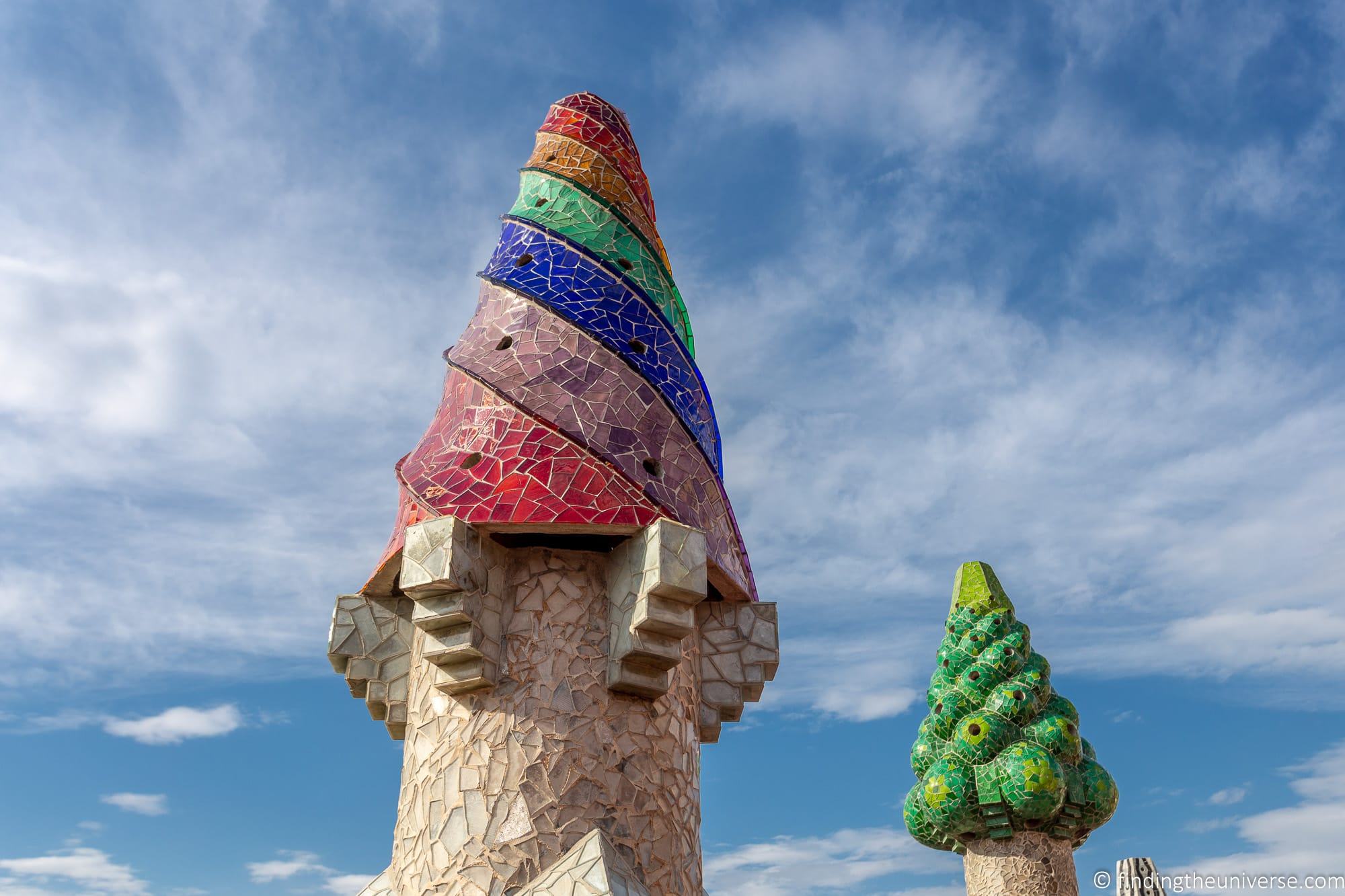
Camp Nou
Fans of FC Barcelona will probably have a visit to Camp Nou right at the top of their list. This is the home of Barcelona’s hugely successful football team, and during the day you can take a tour of the stadium to get a behind the scenes look at everything from the VIP suites to the players locker rooms. You can even sit in the seats the coach sits in during the game!
There’s also a well laid out museum which takes you through the history of the club, its impact on the city, and some of its notable players and achievements. Jess and I actually really enjoyed this visit, despite neither of us being huge football fans.
If you do decide to visit, we definitely advise coming early as it gets very popular. You’ll also want to check match times as obviously you can’t take a tour when the stadium is in use. Although fans may want to also catch a game here.
Camp Nou is free for holders of the Go Barcelona Pass, and there is a small discount for holders of the Barcelona Card. You can also book tickets here.
Note – Camp Nou is undergoing major construction works so access to the stadium is limited until November 2024.
Parc de la Ciutadella
If you would like to visit a city centre park, a good option is the Citadel Park, or Parc de la Ciutadella, which isn’t too far from the Chocolate Museum.
Dating from the 19th century, and the earliest green space in the city, this 70-acre park has plenty of green space – perfect for a picnic, or to grab a breather from all your exploring.
Its best known feature is likely the large water feature, which was one of the earlier works in the city that Gaudí was involved with, although he wasn’t well known at the time and his involvement was fairly minimal.
It’s a grand construction, topped with giant golden horse drawn chariots, and is worth seeing. Entry is free.
Torre Bellesguard
A little way north of the city centre, Torre Bellesguard is a relatively recent addition to the works of Gaudí that you can visit in the city.
Built for a private owner between 1900 and 1909, the home is still occupied by a private owner, so only certain parts of the property can be visited, although this does include the spectacular attic and roof areas which were the highlights in my mind.
I would suggest that this is well worth doing – this is a much less popular attraction than many of the other Gaudí properties, and you will have a bit more room to breathe.
I particularly enjoyed visiting the roof terrace, which has spectacular views over the city, with the bonus that the whole roof is designed to look like a dragon.
Guided tours currently run on weekends, and there are also audio guided tours available. See times and languages on the official site here. You can book tickets (with optional tour) here.
Colonia Güell
Colonia Güell is 23 kilometres from the city centre of Barcelona, but can still be reached by public transport, so don’t let the distance put you off. It’s a purpose built 19th century industrial village, which you can explore with the help of an audioguide.
The village is definitely worth exploring, but the highlight of a visit to Colonia Güell is the church known as Gaudí’s Crypt. Whilst the final vision was never completed, this building was the place where Gaudí first incorporated all of his architectural innovations, and it serves very much as a blueprint for much of the Sagrada Familia.
The only part of the church to be completed was the crypt area, although this feels more like a church than a crypt, with a full nave, altar and pews. It’s a truly unique creation, and as it requires a bit more effort to get here than say the Sagrada Familia, is a lot less crowded – we actually had the whole Crypt to ourselves for large parts of our visit.
Entry is free with the Go Barcelona Pass, and you get the audioguide as part of your entry too. The Barcelona Card gives discounted admission. You can also book tickets online in advance here.
And that sums up our suggested itinerary for three days in Barcelona! As you can see, there’s a lot to see and do here, and you’ll have no trouble filling your time. Now, let’s take a look at some practicalities for your visit, as well as a map of this Barcelona itinerary.
3 Day Barcelona Itinerary Map
To help you visualise all the above, we have put together a map which you can see below or on Google Maps here. It also includes our recommended hotels.
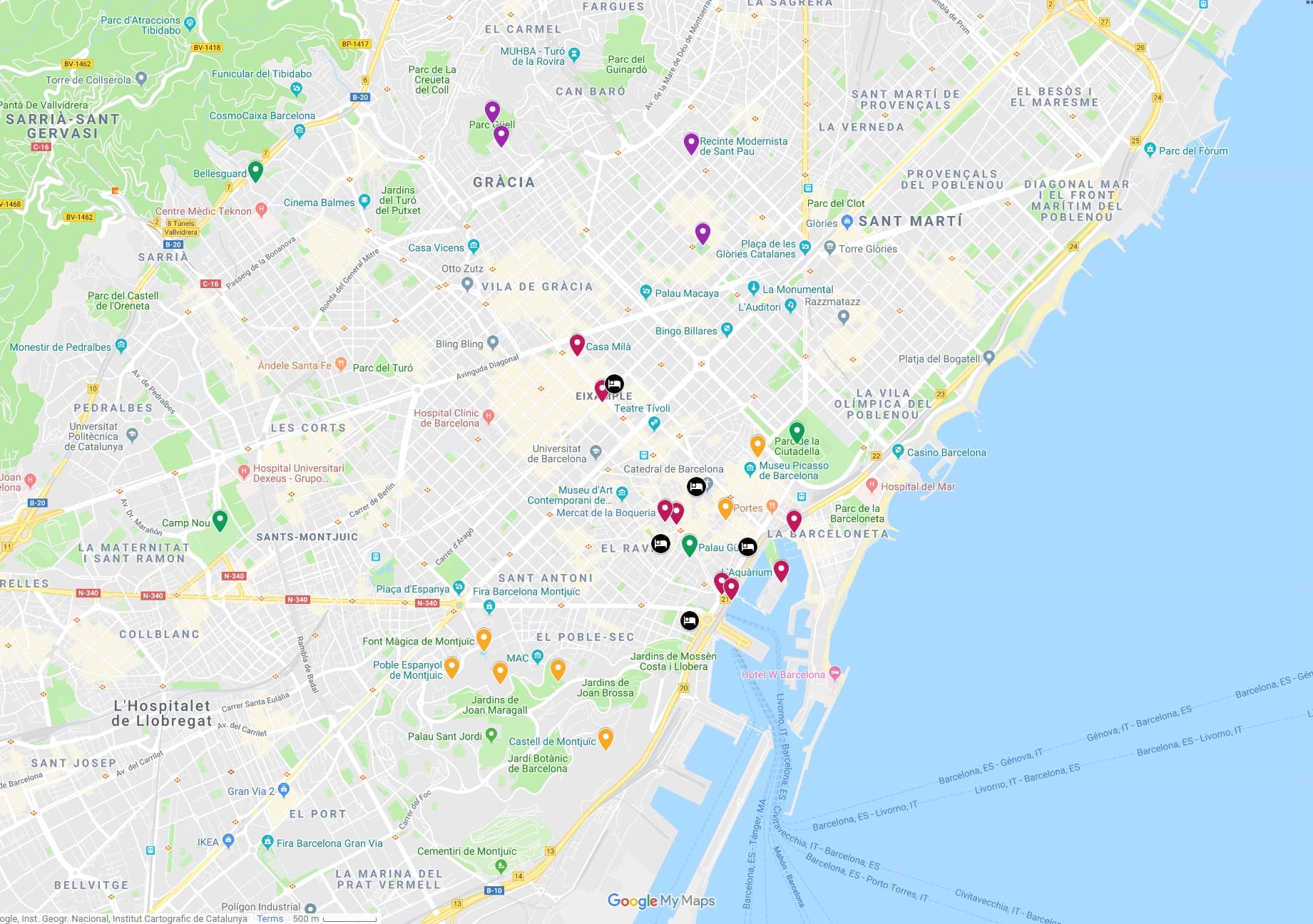
3 Day Barcelona Itinerary Overview
- Day 1: Casa Batlló, Casa Milá, Las Ramblas, La Boqueria, Mirador de Colom, Las Golondrinas, Barcelona Aquarium
- Day 2: Sagrada Familia, Recinte Modernista Sant Pau, Gaudí Experience, Park Güell
- Day 3: Chocolate Museum, Gothic Quarter, Montjuïc Hill
How to Save Money on Your Barcelona Sight-Seeing
As you’ll have seen throughout this post, Barcelona has a number of options for saving money when visiting attractions in Barcelona.
The three main ones that we recommend visitors look at are the Go Barcelona Pass, the Barcelona City Pass, and the Barcelona Card.
These work a little differently, and depending on what you want to visit, you might find one works better for you than the other.
If you plan to visit everything on the main itinerary above, the Go Barcelona Pass is what we would recommend.
The combined price of the attractions which are included in the above Barcelona itinerary that are covered by the Go Barcelona Pass at time of writing is around €211, and a three-day pass is only €159 (as of April 2023).
Consider that it also includes the Barcelona Bus Turístic Hop on Hop off bus tour worth €30, plus a number of other attractions as well as a walking tour and bike tour, then we think the Go Barcelona Pass is excellent value for money and well worth considering for your Barcelona visit.
Read Jess’s full review and guide to using the Go Barcelona Pass to see if it makes sense for you.
If you don’t think you’ll visit enough attractions to make the Go Barcelona Pass worth it, then you might consider the Barcelona Card instead.
This is a cheaper option, and whilst it does offer free admission to a number of attractions, the majority of its benefit comes in the form of free public transport (including the airport train) and a range of discounts on popular attractions.
Another option if you just want to focus on the highlights, and then save on the other major attractions as you wish, is the Barcelona City Pass.
This pass includes both the Sagrada Familia and Parc Guell, and it lets you pre-book a timeslot for both of these, which is essential to a smooth queue free visit. It also includes a number of other features and attractions, including a hop on hop off bus ticket, and 10% off admission at the majority of the sites in this post.
So, which card to go for? Well, in the text above for each attraction I’ve made it clear where each card offers a benefit, so do take a look through and figure out which card might be best for you, and also check out the other features of the Barcelona City Pass, the Go Barcelona Pass and the Barcelona Card before making a decision, which may include discounted admissions, guide books, and so on.
Overall, if you’re planning on seeing everything in this guide, then the Go Barcelona Pass will likely be the best option. If you are focusing primarily on specific highlights like the Sagrada Familia and Park Guell, the Barcelona City Pass is a fantastic option.
Finally, if you’re just going to a few attractions and are more concerned with sorting out your transport and getting a bit of a discount, check out the Barcelona Card.
Note – in 2020 the Barcelona Pass rebranded as the Go Barcelona Pass which is now a virtual product only – there is no physical pass option. The products included are the same, but the name and branding changed. Our photos are of the older product, from when it was available as a physical pass.
Getting Around Barcelona
Barcelona is easy to get around, with an extensive bus, metro and light rail network. It’s also easily walkable for the most part, although you will likely want to take public transport for some of the slightly further out destinations.
If you are going to use public transport you have two options, depending on how much you want to travel.
First, you can buy individual tickets as you go. If you decide to do this, the most cost-effective way to do so is the ten ticket (T-Casual) card. This is much cheaper than buying individual tickets and also lets you change transport options within an hour and fifteen minutes of starting your journey.
Note this was previously known as the T10 card. Unlike the T10 card though, this cannot be used by multiple travellers for the same journey – each traveller needs their own card.
The other option for public transport is the Hola BCN card, which gives unlimited access to the transport network in the city, and is available for durations from 48 hours to 120 hours. You can buy that online here.
There are a couple of other options for paying for your Barcelona transport.
First, if you purchase a Barcelona Card or a Barcelona Card Express, you get free travel on the metro, buses, trams and trains for the duration of the card. This includes the airport metro and train.
Second, if you purchase a Go Barcelona Pass or Barcelona City Pass, these both come with one day access to the Hop On Hop Off Barcelona Bus Tour, which covers nearly every major tourist site in the city.
Alternatively, you can purchase 1 or 2 day hop on hop off bus tickets directly here.
If you’re arriving into Barcelona by air, you can take a taxi or train into the city centre. There’s also an airport bus service, which is what we normally use. You can buy tickets on the day, but we normally reserve ours in advance so as not to have to worry about it. You can buy tickets for the Barcelona aerobus here.
Walking Tours of Barcelona
We love taking walking tours when we visit a city. It’s a great way to learn a lot about its history, culture and people, as well as get tips on what to see and where to eat.
There are a number of walking tour companies offering tours in the city. If you pick up one of the aforementioned passes, some of these include a walking tour, so definitely take advantage of that.
Otherwise, we usually recommend walking tour company Take Walks. We’ve taken tours with them in cities around the world, and enjoy the small groups and knowledgeable guides. They offer a number of tours in Barcelona, some of which we’ve included below along with other suggestions.
- This excellent value 2-hour walking tour of Barcelona’s Gothic Quarter on GetYourGuide
- This 3 hour tour of the Gothic Quarter which includes tapas tasting. Included on the Go Barcelona Pass
- Complete Gaudí Tour: Interested in learning about Gaudi? This tour features some of the architects highlights, including Casa Batlló, Park Guell and the Sagrada Família. It even includes a Tower Climb of the latter. This is with Take Walks, one of our favourite walking tour companies.
- Barcelona Cooking Class: Want to learn how to cook some delicious Spanish cuisine? This Paella making party with a local chef includes a visit to Boqueria market and Sangria making!
- Skip the Line Express Sagrada Família Tour & Tickets – If you want a guided tour of the Sagrada Familia and are struggling to get official tickets, this is a great option
- If you prefer your tours to mix history with food, check out this 3.5 hour food walking tour of the Gothic Quarter which includes tapas tasting, drinks and dinner. This is another Take Walks tour.
Obviously, if you decide to take a walking tour you will need to tailor this itinerary to suit. We’d suggest doing it earlier in the trip so you can take full advantage of the tips your guide gives you.
Naturally, there are also many other walking tours to choose from. See this selection on GetYourGuide and these options on Viator for more ideas.
Day Trips from Barcelona
If you’re in Barcelona for longer, or would prefer to spend one of your days exploring the Catalonia region, then we have some fantastic day trip options for you to consider.
- A full day trip to Girona and Figueres – visiting Girona and Figueres is one of the more popular day trip options from Barcelona. Girona has spectacular old medieval streets to explore, Figueres was the birthplace of Dali, and it has a fantastic Dali museum.
- A luxury full day small-group tour from Barcelona which includes the Dali Museum, Girona, and lunch in Besalu
- A day tour to Montserrat – home to the Montserrat monastery, built at the top of the impressive Montserrat mountains. This is a wonderful place for hiking and epic photos. The full day tour includes wine tasting and lunch.
- A day tour of the medieval villages of Catalonia, which includes stunning Besalu as well as Rupit and Tavertet
- A full day small group tour to Montserrat that includes early Entrance to Montserrat Monastery as well as a Gourmet Cava Tour and lunch
- A hot air balloon tour – this tour includes a hot air balloon ride, transfers and breakfast
- A full day tour of the Pyrenees – this includes a visit to the stunning Nuria Valley which can only be accessed on foot or by rack railway. In summer it’s the perfect place for hiking, and in winter it’s a haven for snow sports. You can also book a full day hiking trip if you prefer.
- Speaking of skiing, if you visit Spain in winter you can take a day trip from Barcelona and go skiing! See our detailed guide to how and where to go skiing in Spain here
- A full day tour of the Costa Brava coastline – the rugged Costa Brava coastline is home to stunning beaches, ruined Roman cities and dramatic coves. This tour will take you to some of the highlights.
Where to Stay in Barcelona
Barcelona has no shortage of choice when it comes to accommodation, and we’ve stayed at a number of different locations in the city in both apartments and hotels.
Our preferred option when booking accommodation is booking.com (see their Barcelona listings here). They list everything from hotels to apartments to hostels, and we find they usually have the widest range at the most competitive prices.
To give you an idea of what’s available, here are some options we recommend:
- Hotel Barcelona Catedral – a 4* property in Barcelona in the heart of the Gothic Quarter. We’ve stayed here, and enjoyed the roof top pool and incredible central location.
- Hostel One Ramblas – a very well reviewed and very central hostel option
- The 8 Boutique B&B – a highly rated and well located bed and breakfast
- Duquesa de Cardona – a 4* property on the waterfront with a roof top bar
- Leonardo Hotel Barcelona Las Ramblas – part of the good value Leonardo chain, this 3* property is a few moments from Las Ramblas. We enjoyed our stay here, and the breakfast in particular was excellent.
Apartment rentals through sites like Plum Guide are also available. One thing to be aware of is that in Barcelona these need to be registered with the city. When they are registered they will be issued a license number. If you want to stay in an apartment rental in Barcelona, then we recommend picking one which has the license number on the listing.
If you would prefer to stay in an in apartment in Barcelona, then we recommend Plum Guide.
Plum Guide carefully curate their listings so their options tend to be of a very high quality whilst still being available at a range of price points. We’ve stayed at a number of their properties around the world, and you can see our review of the Plum Guide here. See their listings for Barcelona here.
If you can’t find what you want from the above choices, or you want some new options to try out, we wrote a whole post on the best alternatives to AirBnB which you should check out!
Practicalities for Visiting Barcelona
Safety: We’ve not had any problems in Barcelona, although the city carries a reputation for petty crime, in particular pick pockets. These are known to frequent tourist areas, especially Las Ramblas and the metro system. We believe that most crime is opportunistic in nature, so if you take basic precautions and are aware of some common Barcelona scams, you should be fine.
Power: Electricity is of the 220v standard, with the 2 pin European style plug. Travellers from countries like the UK and the US will need an adapter, and US travellers need to check their equipment supports the 220v standard – it will be written clearly on the power adapter.
See more on travel adapters and how to choose one for your trip in our guide to the best travel adapters.
Currency: Barcelona is part of the Eurozone, so the main currency is the Euro. You can get these from ATM’s, banks and currency exchanges, although credit cards are of course widely accepted.
Internet: Internet access is widely available in the form of WiFi all around the city and in hotels and coffee shops, so you shouldn’t have any trouble getting online. You can also pick up local SIM cards if you have an unlocked phone. If you are travelling from the USA, consider a Google Fi package which lets you use your data overseas.
For more options on getting online when travelling, check out our guide to getting online when travelling to help you figure out the best options.
Water: The water in the taps is safe to drink, but tastes heavily chlorinated. If you don’t like the taste, bottled water is widely available.
Further Reading for your 3 Day Barcelona Trip
Well, that was a lot of content to help you plan your trip to Barcelona! Hopefully you find it useful. As well as the above, we have a number of other resources we’d like to recommend to help you out, both content we’ve written ourselves, and resources we’ve found online. Between this post and these resources, you should be able to put together the perfect trip!
- If you’re visiting for a shorter time period, here’s a suggested itinerary for one day in Barcelona as well as our 2 day Barcelona itinerary.
- Our guide to the best photography spots in Barcelona
- Jess’s comprehensive review and guide to using the Go Barcelona Pass
- A post comparing the three main discount passes available in Barcelona, to help you decide which one will save you the most money
- A guide to taking a day trip from Barcelona to Girona and Figueres
- A guide to the best locations for getting a great view of Barcelona
- Some of our favourite street art in Barcelona
- Want to see some of Gaudi’s creations? Check out our definitive guide to the best Gaudi sights in Barcelona
- Thinking of heading out of town? Check out our definitive guide to the Spanish Pyrenees, as well as our guides to things to do in Girona, and things to do in Besalu!
- The Lonely Planet Pocket Guide to Barcelona
- Rick Steve’s Barcelona Guide
- The official Barcelona Tourism webpage
And that sums up our idea of how to spend the perfect three days exploring Barcelona! We hope you found this itinerary useful. Are you planning a trip to Barcelona? What do you want to see when you do? Let us know in the comments below!
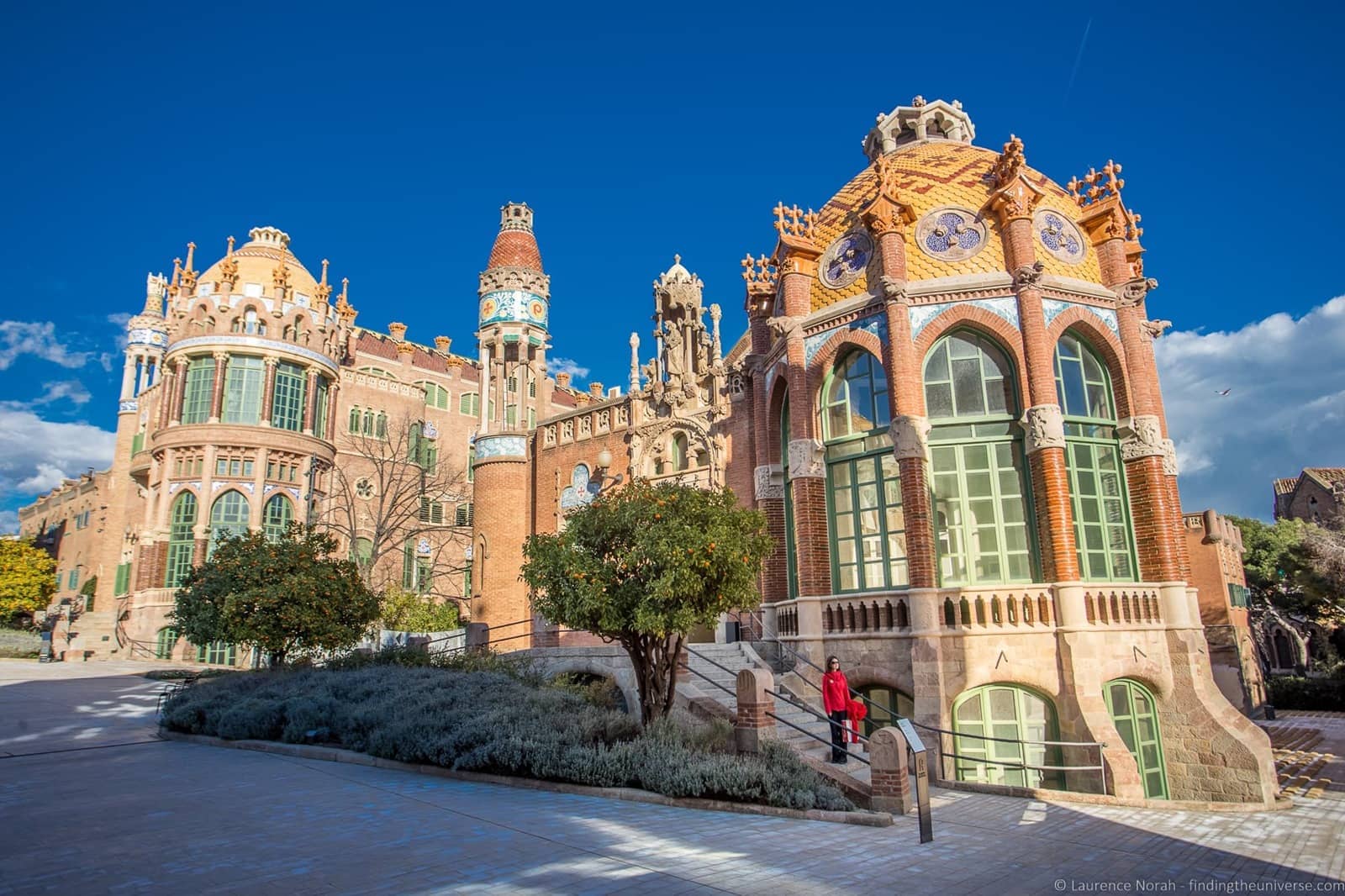
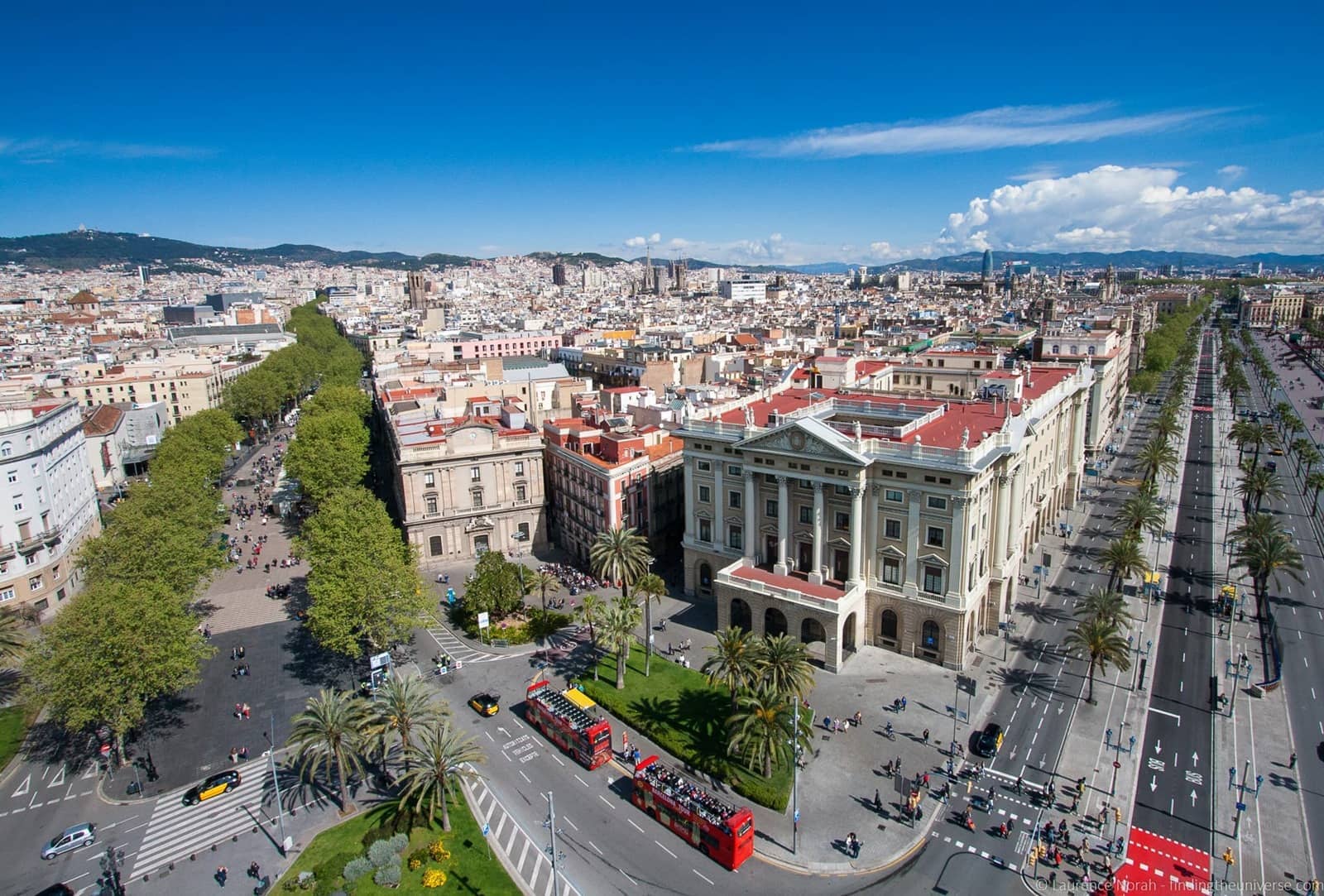
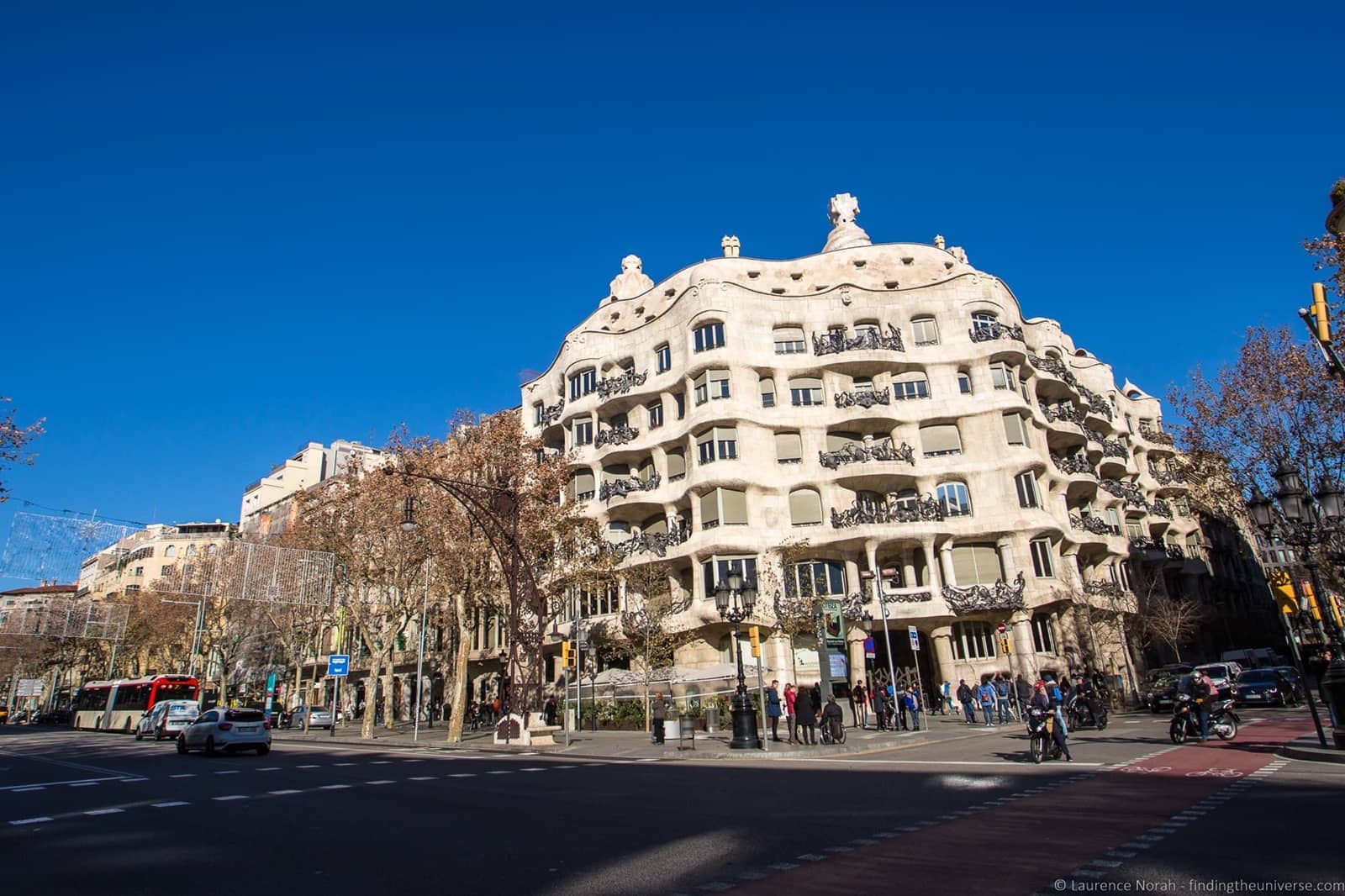
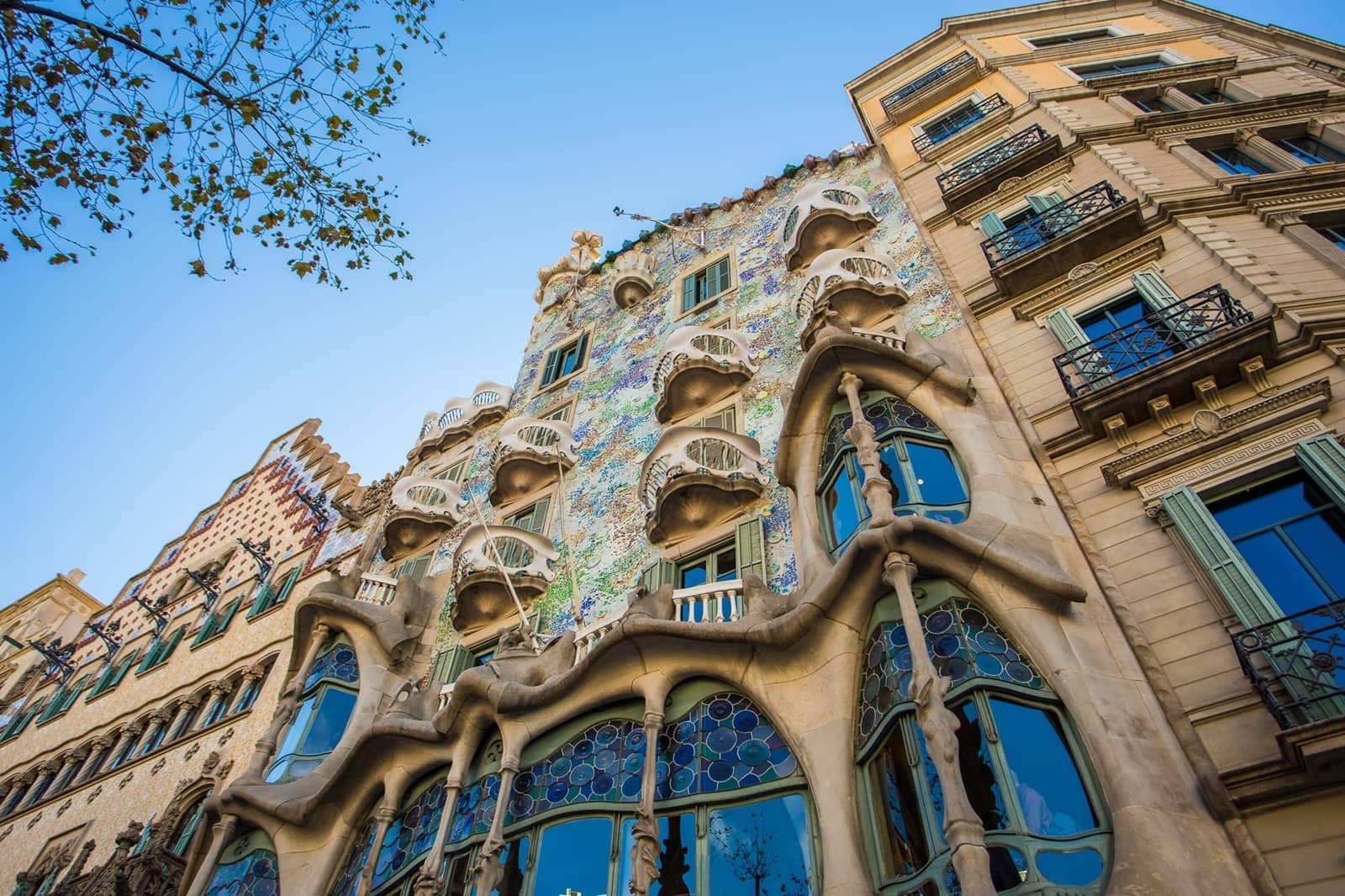
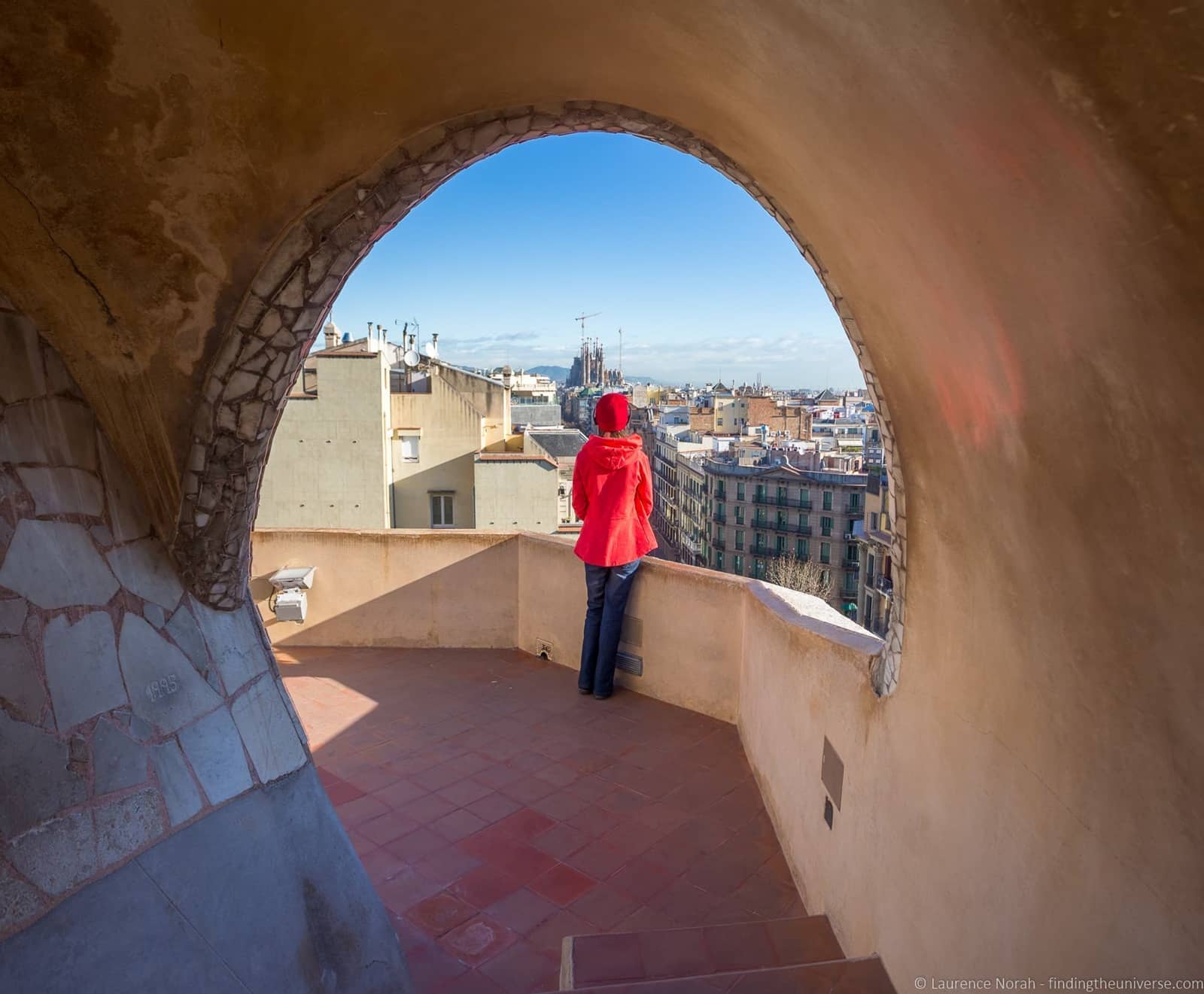
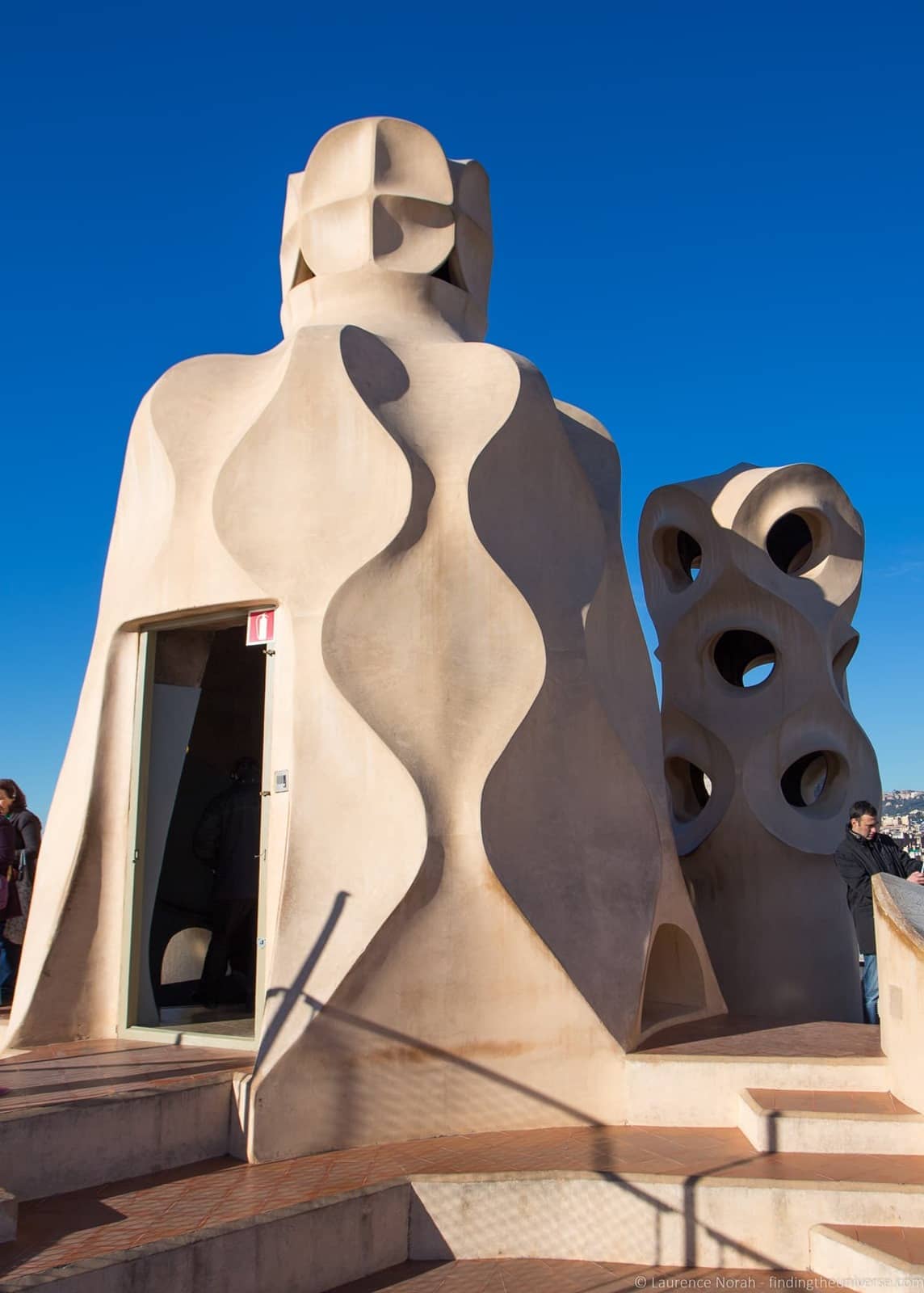
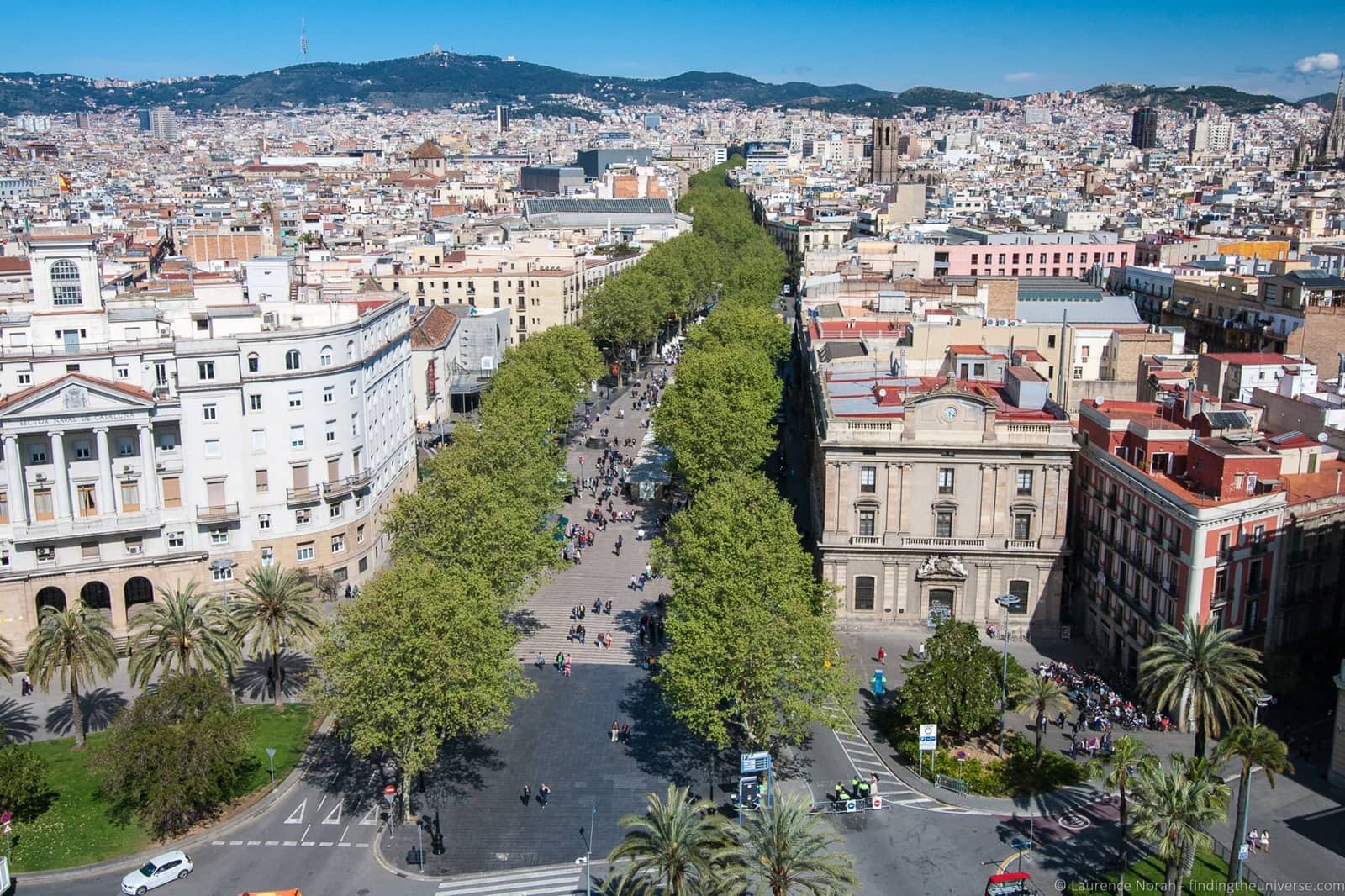
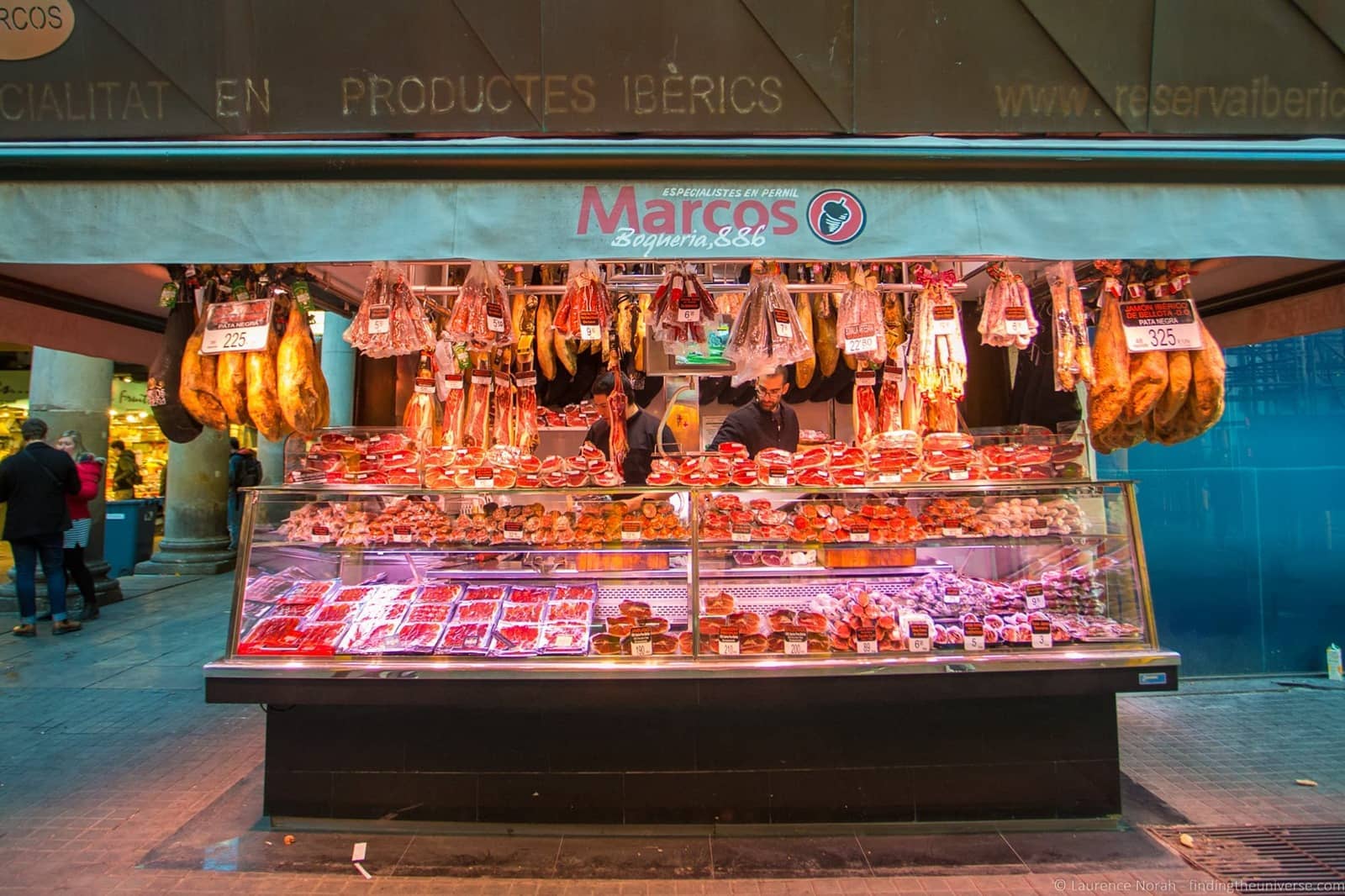
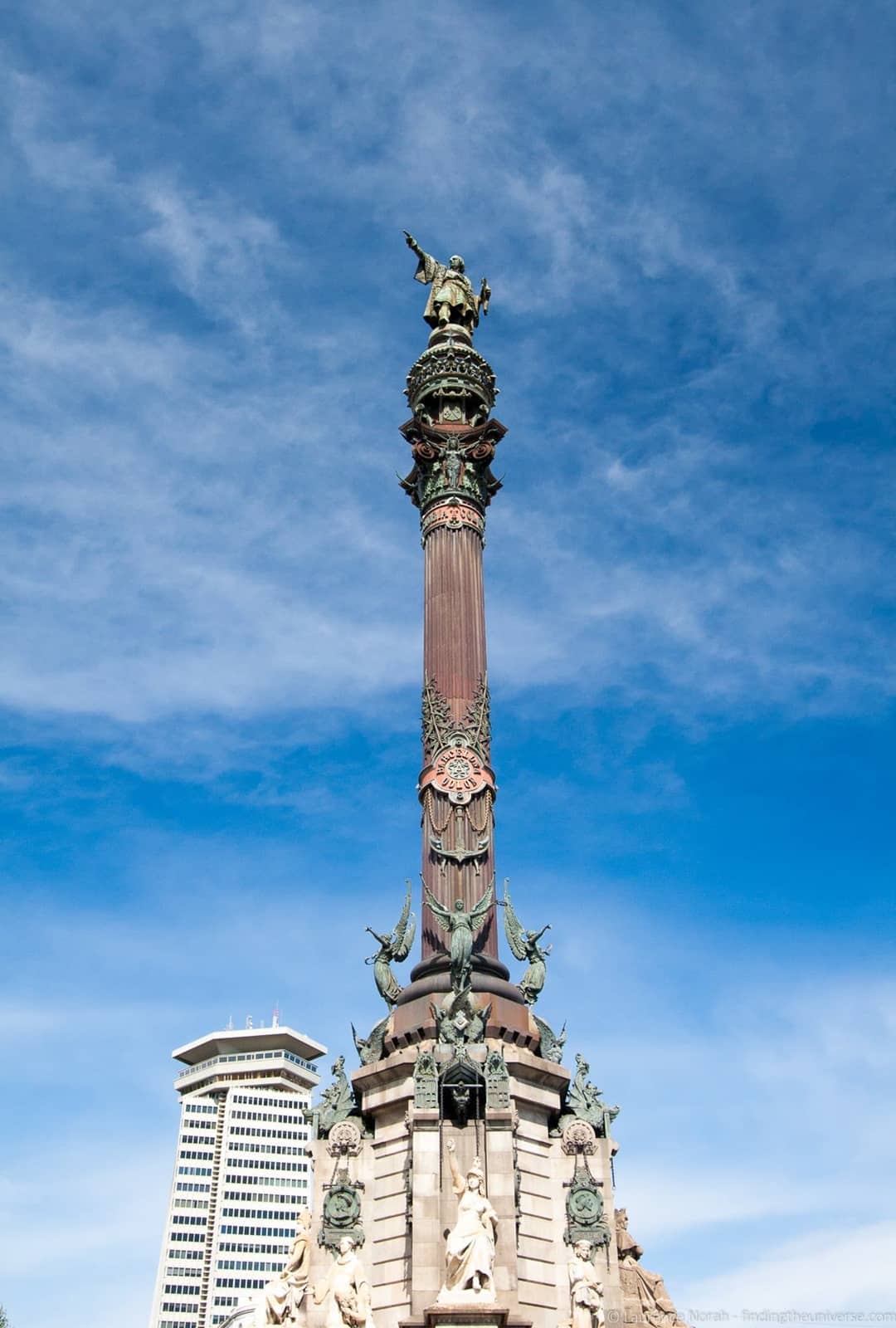
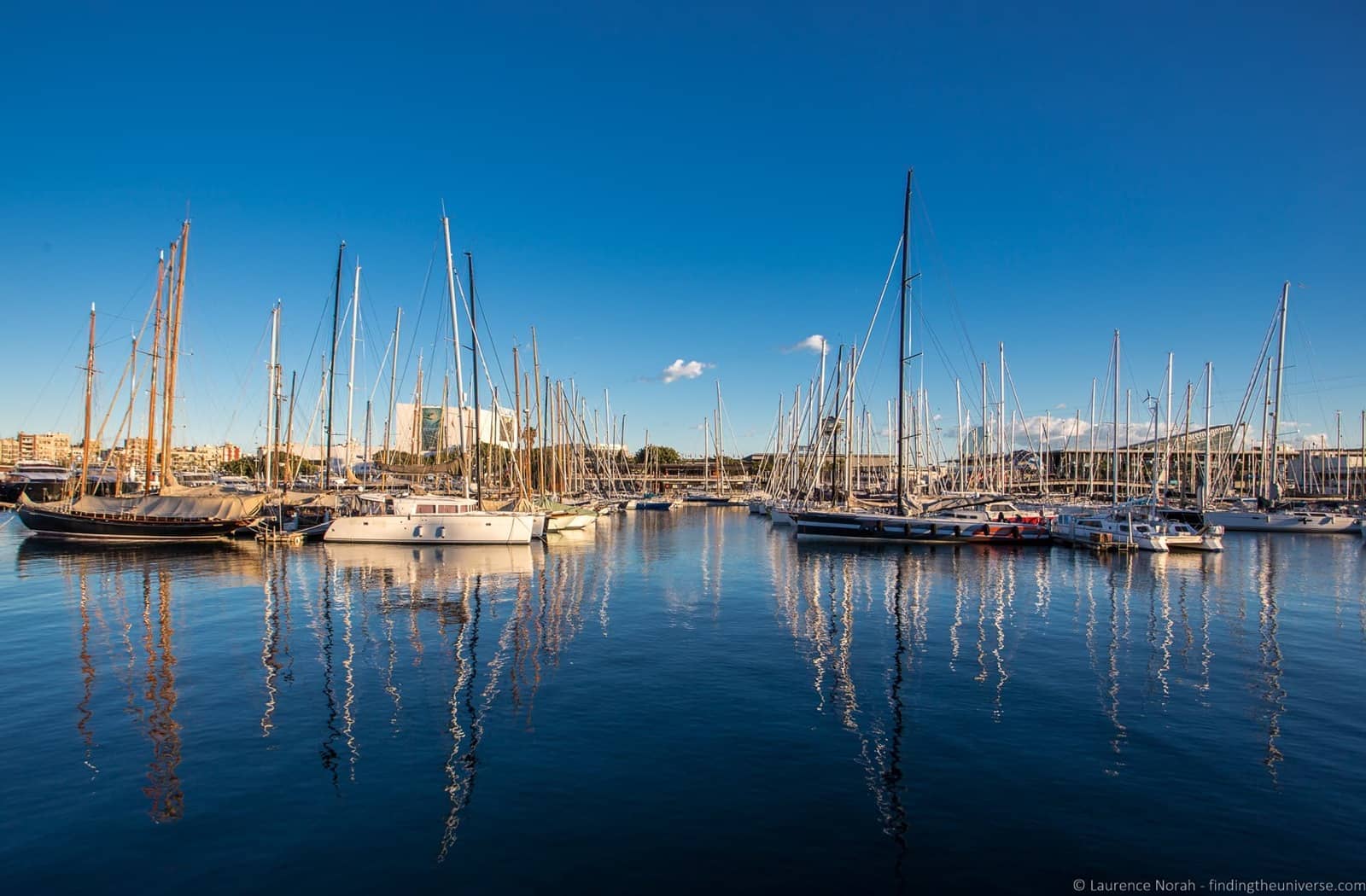
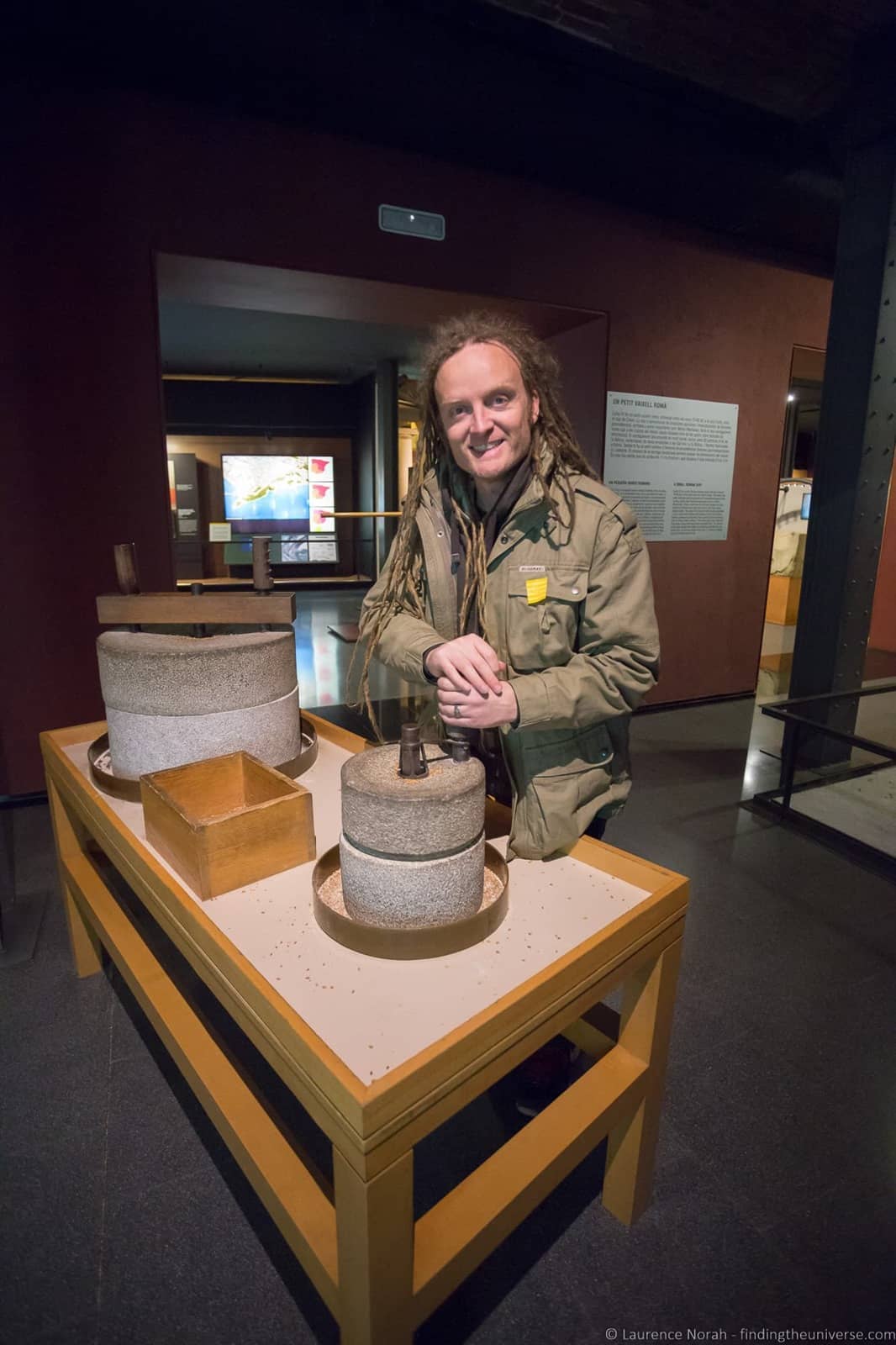
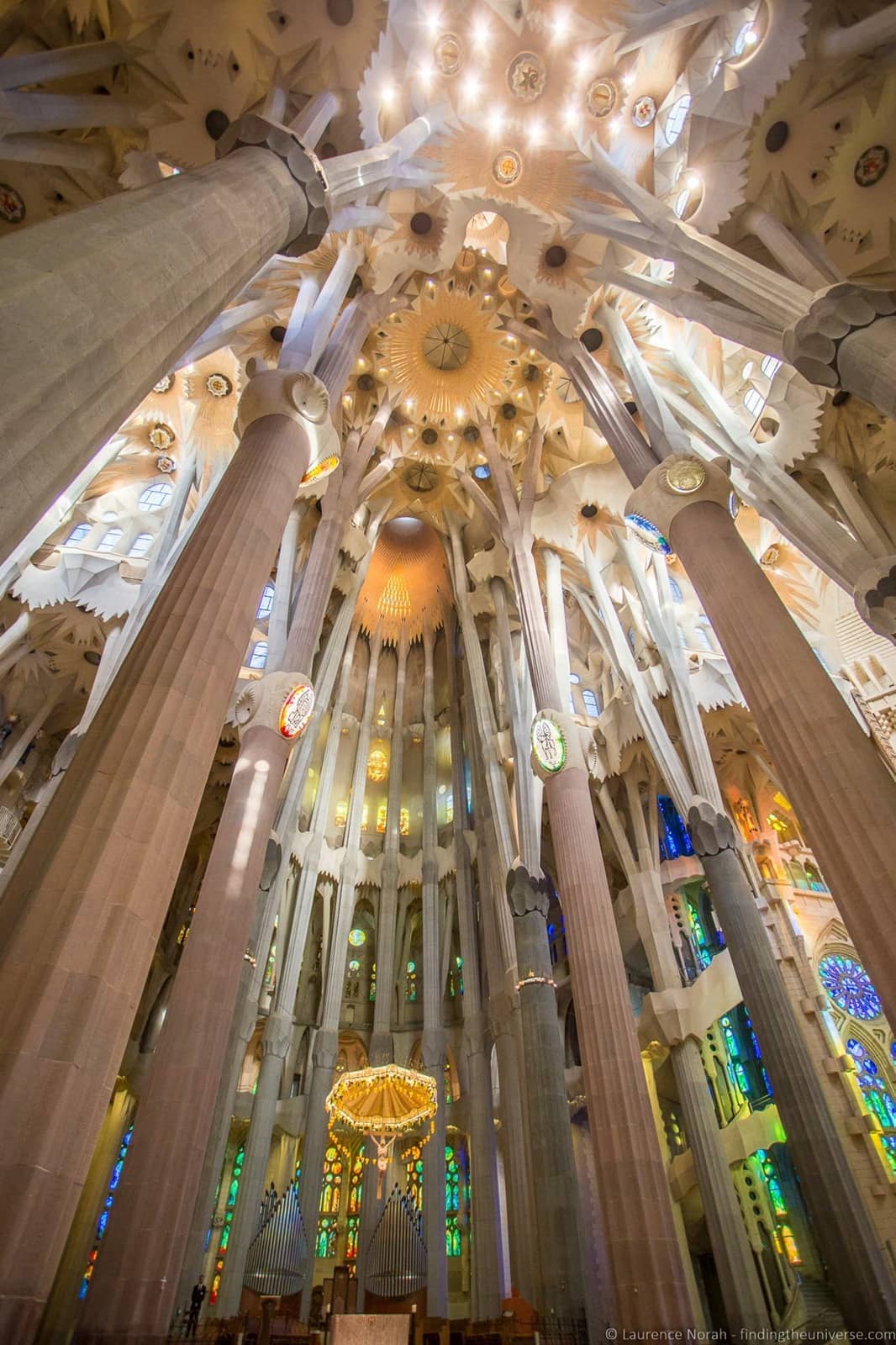

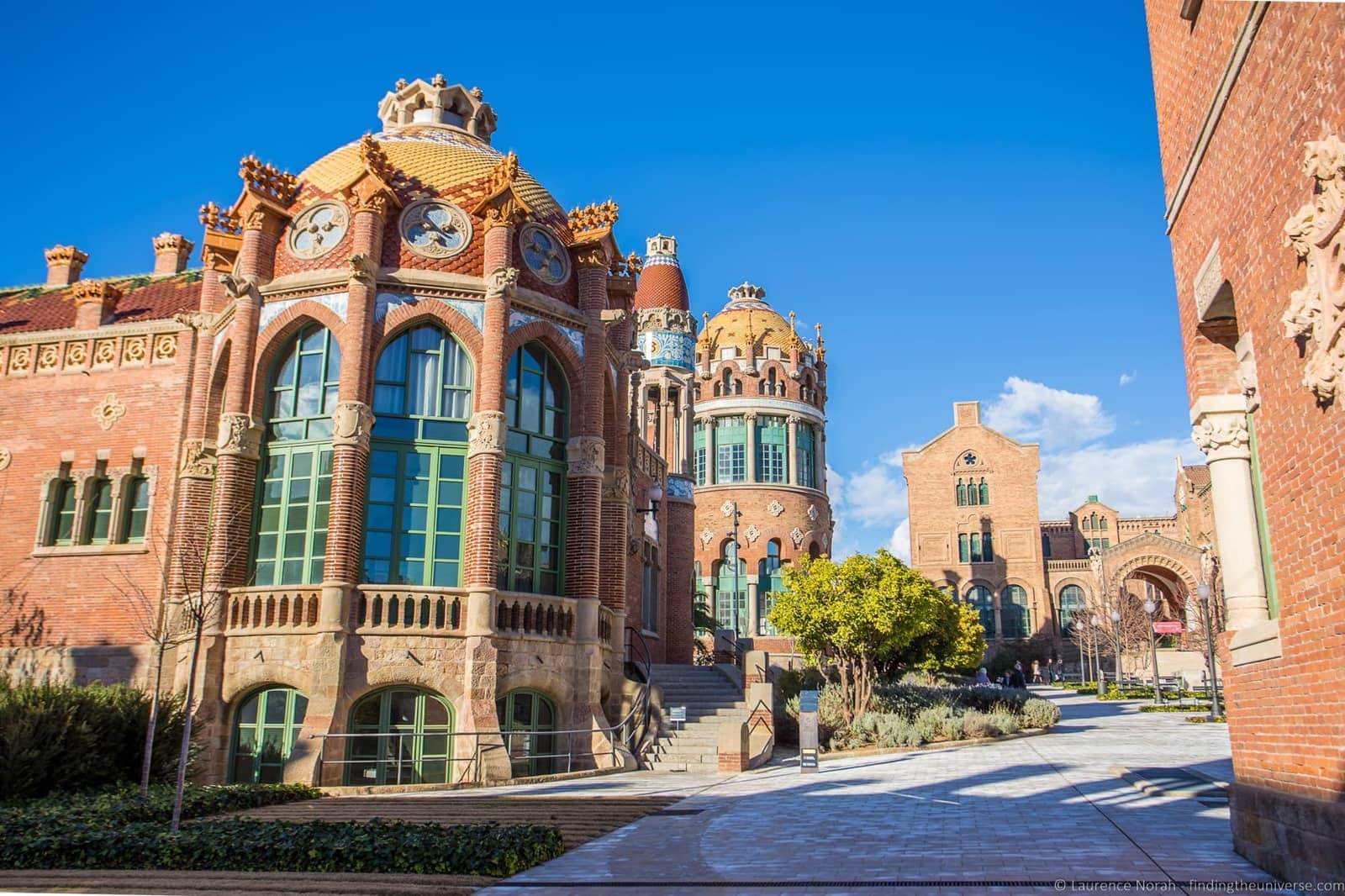
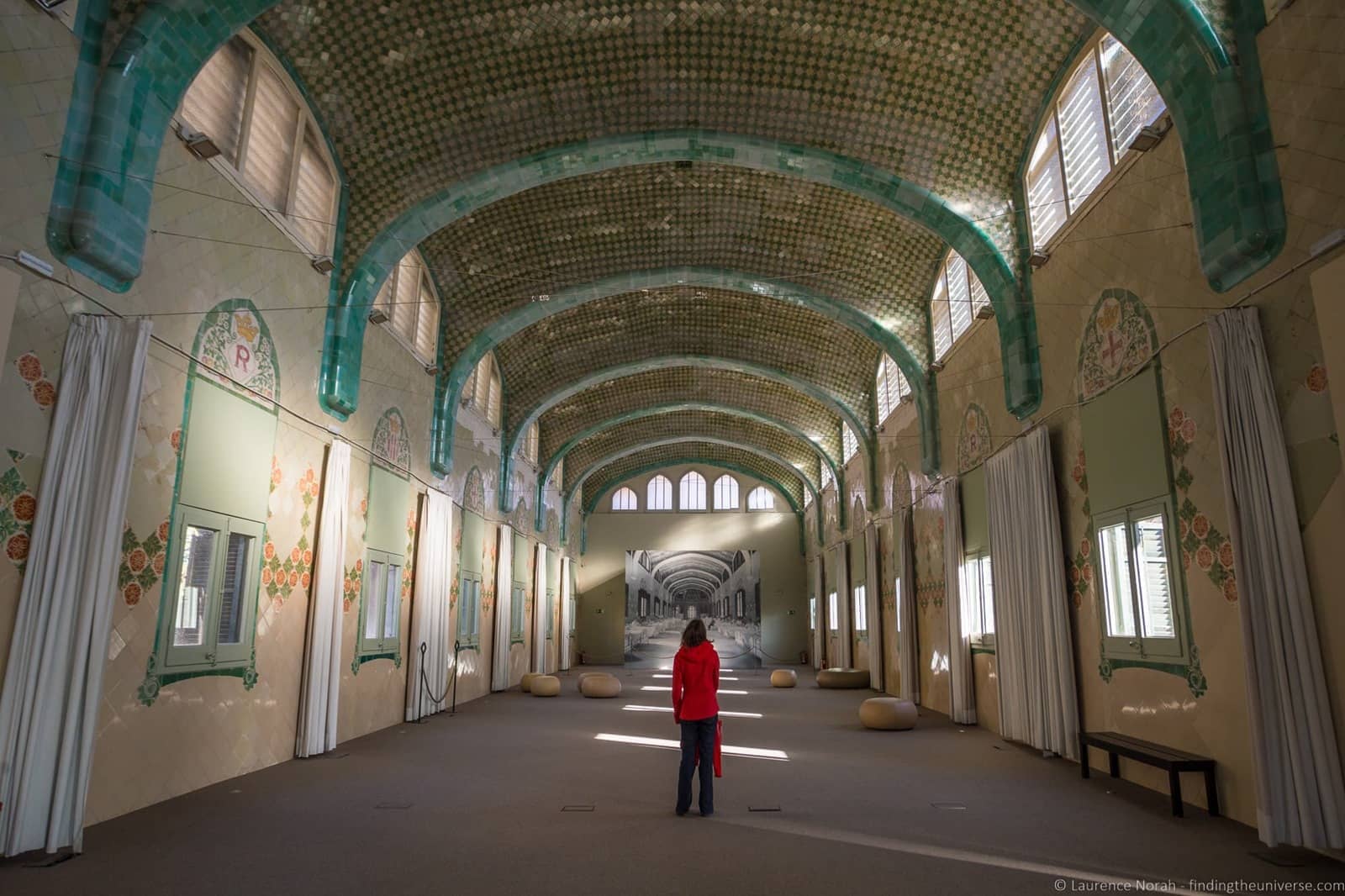
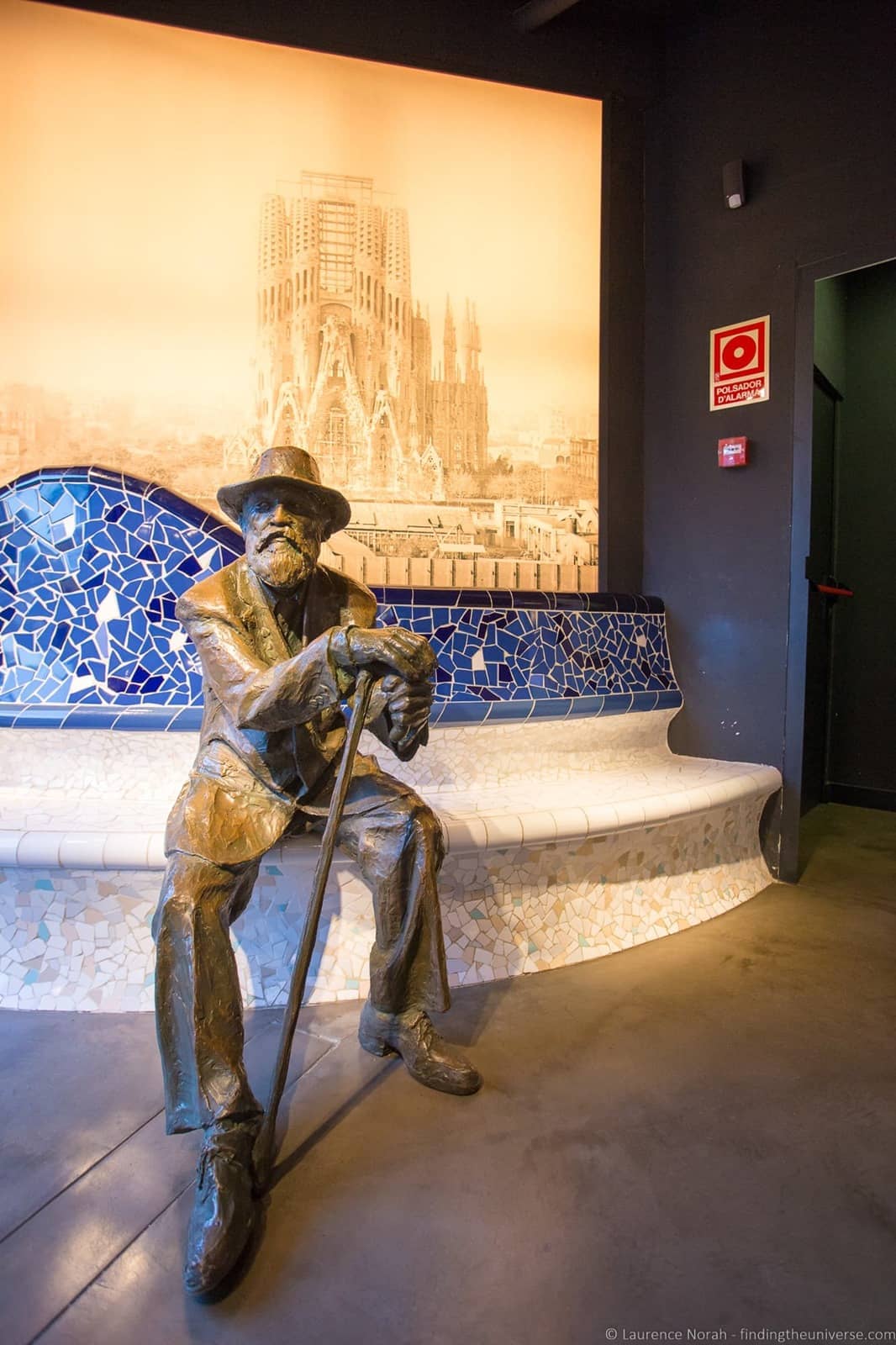
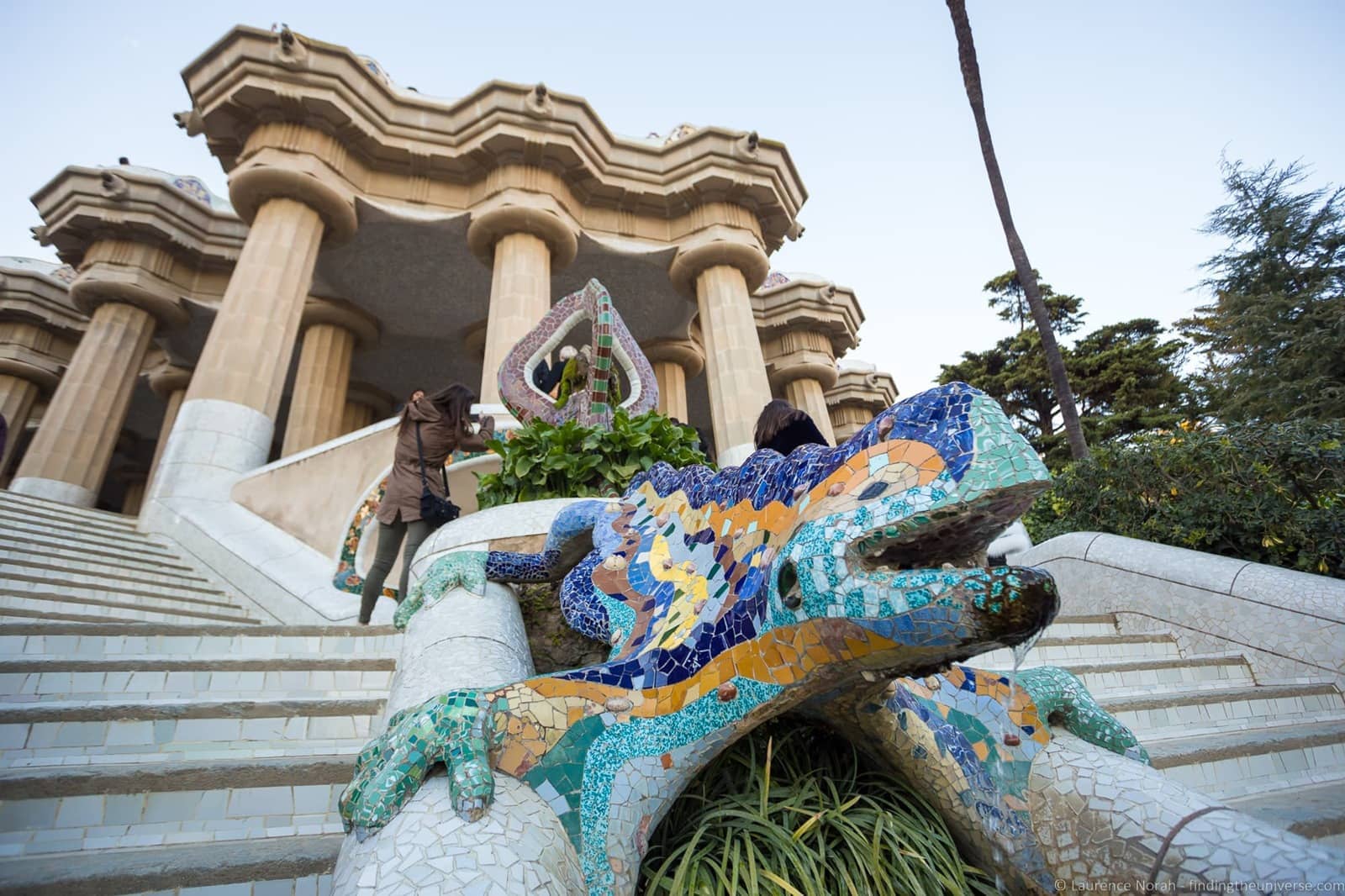
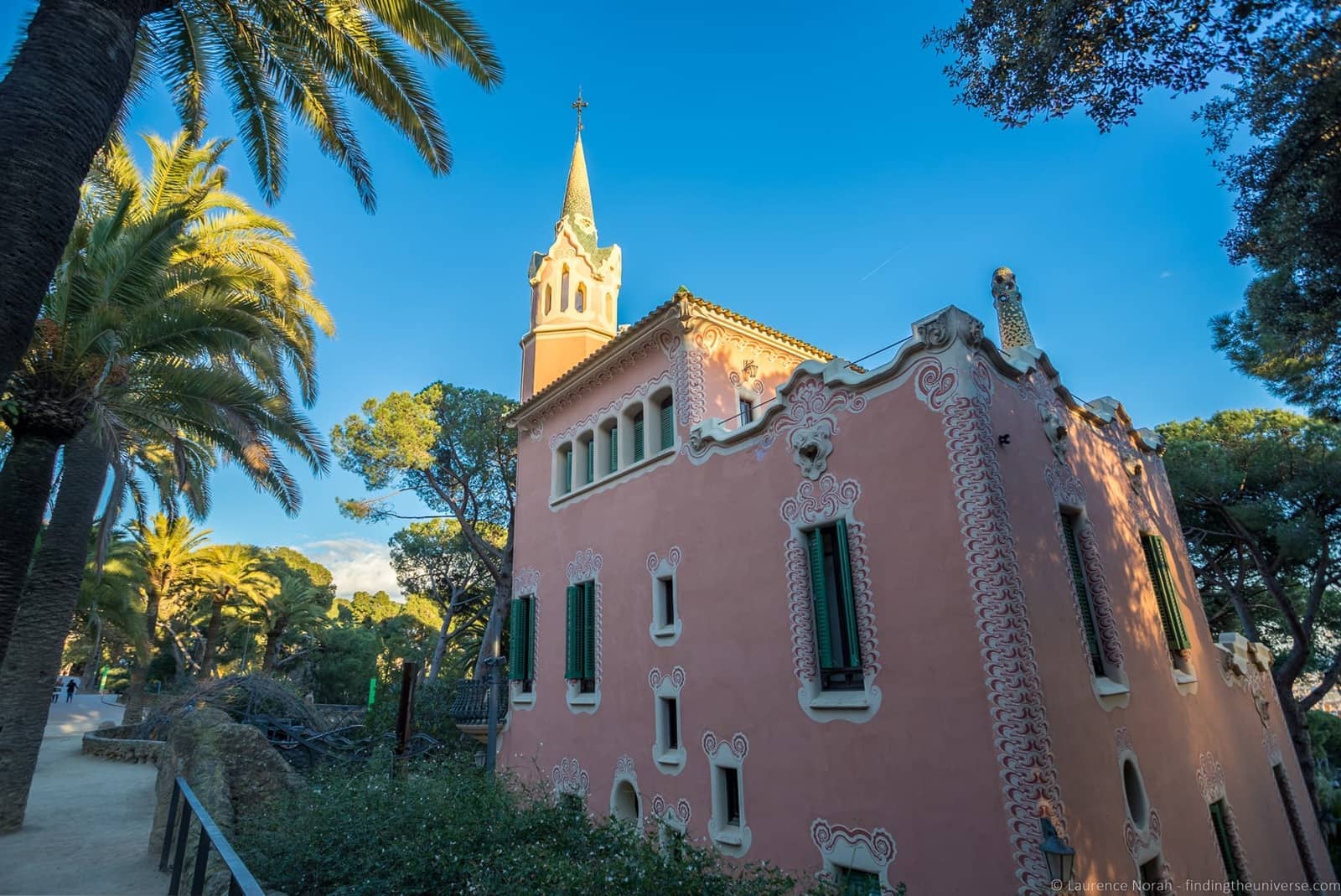

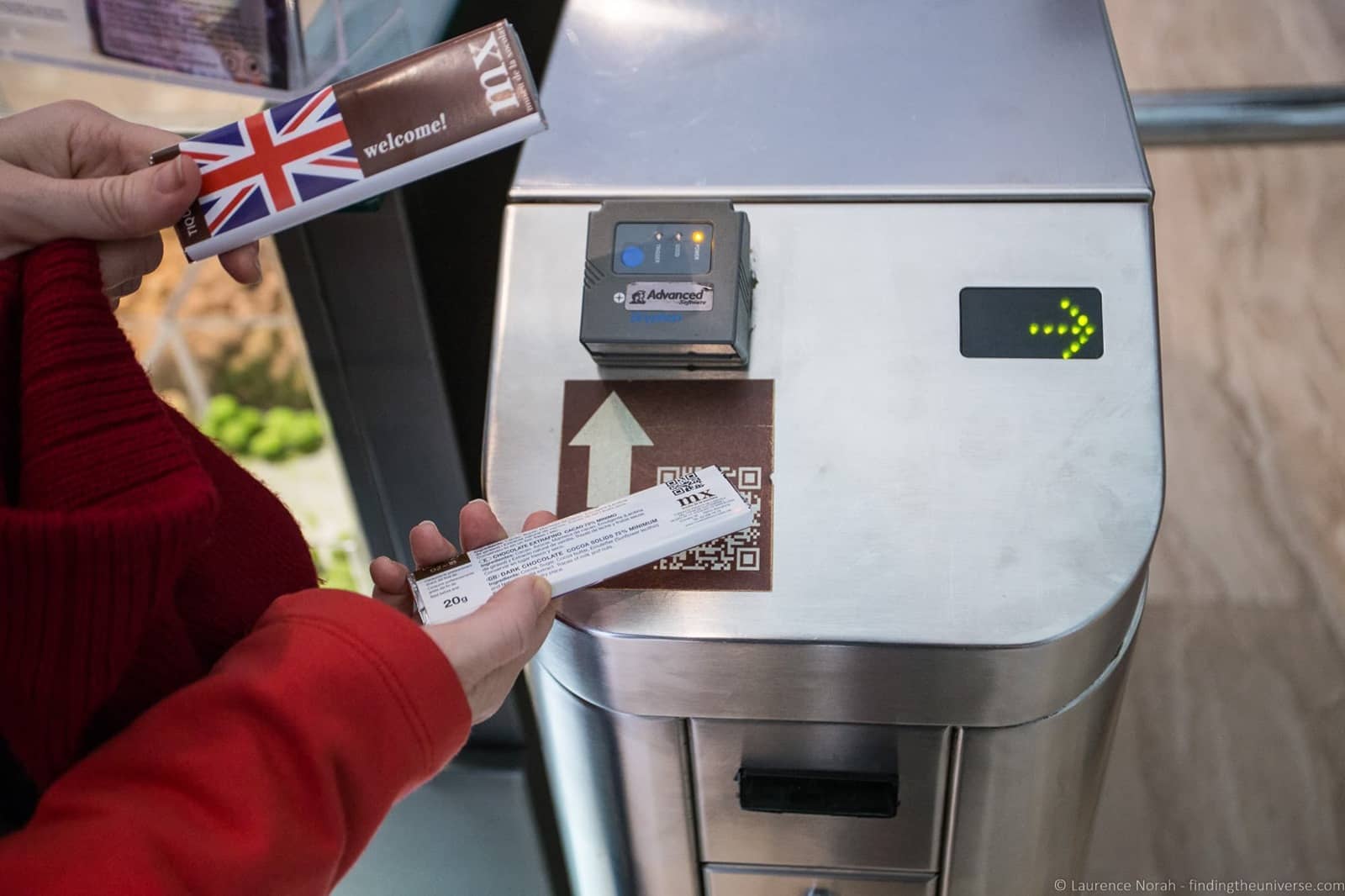
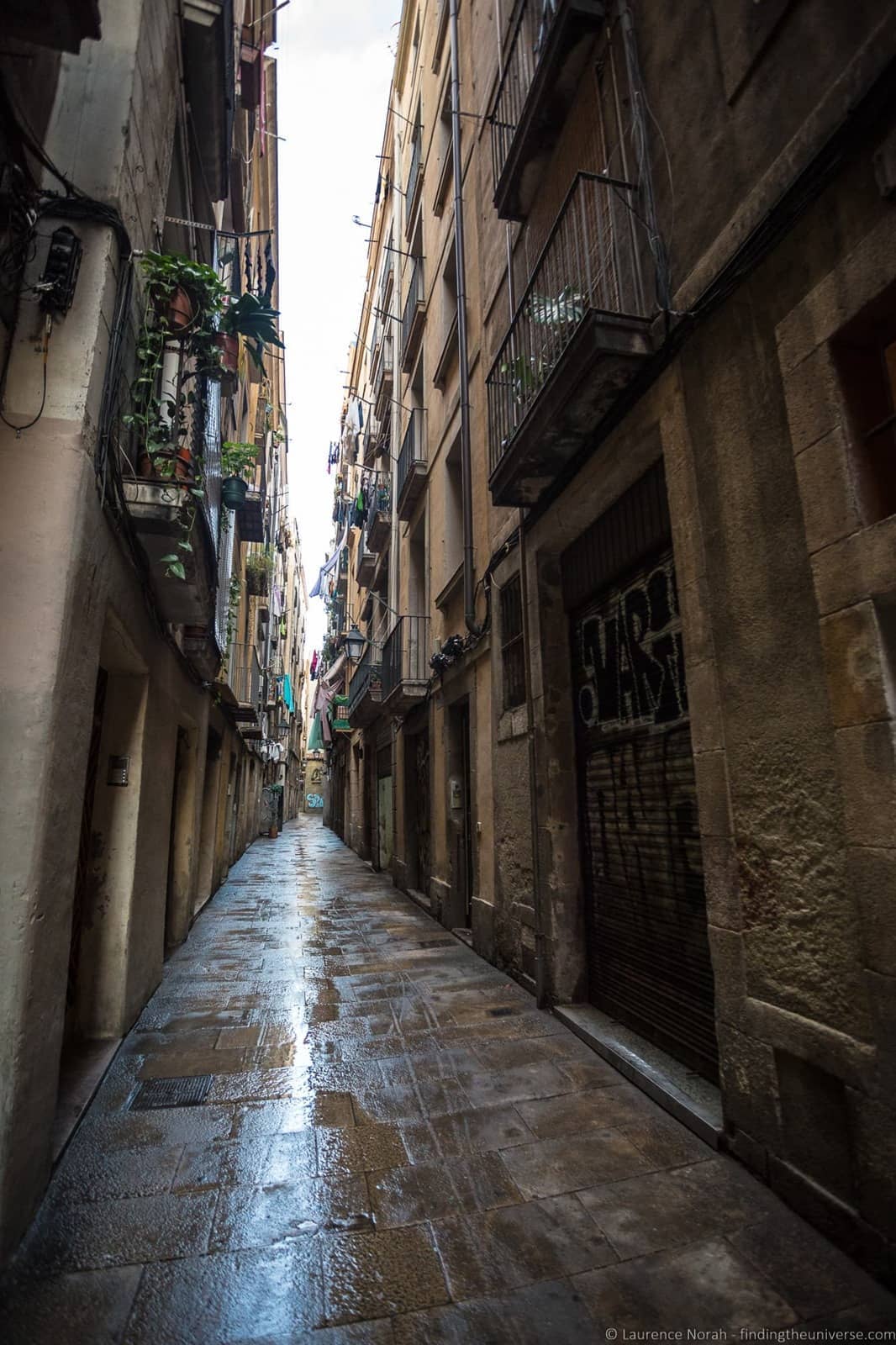
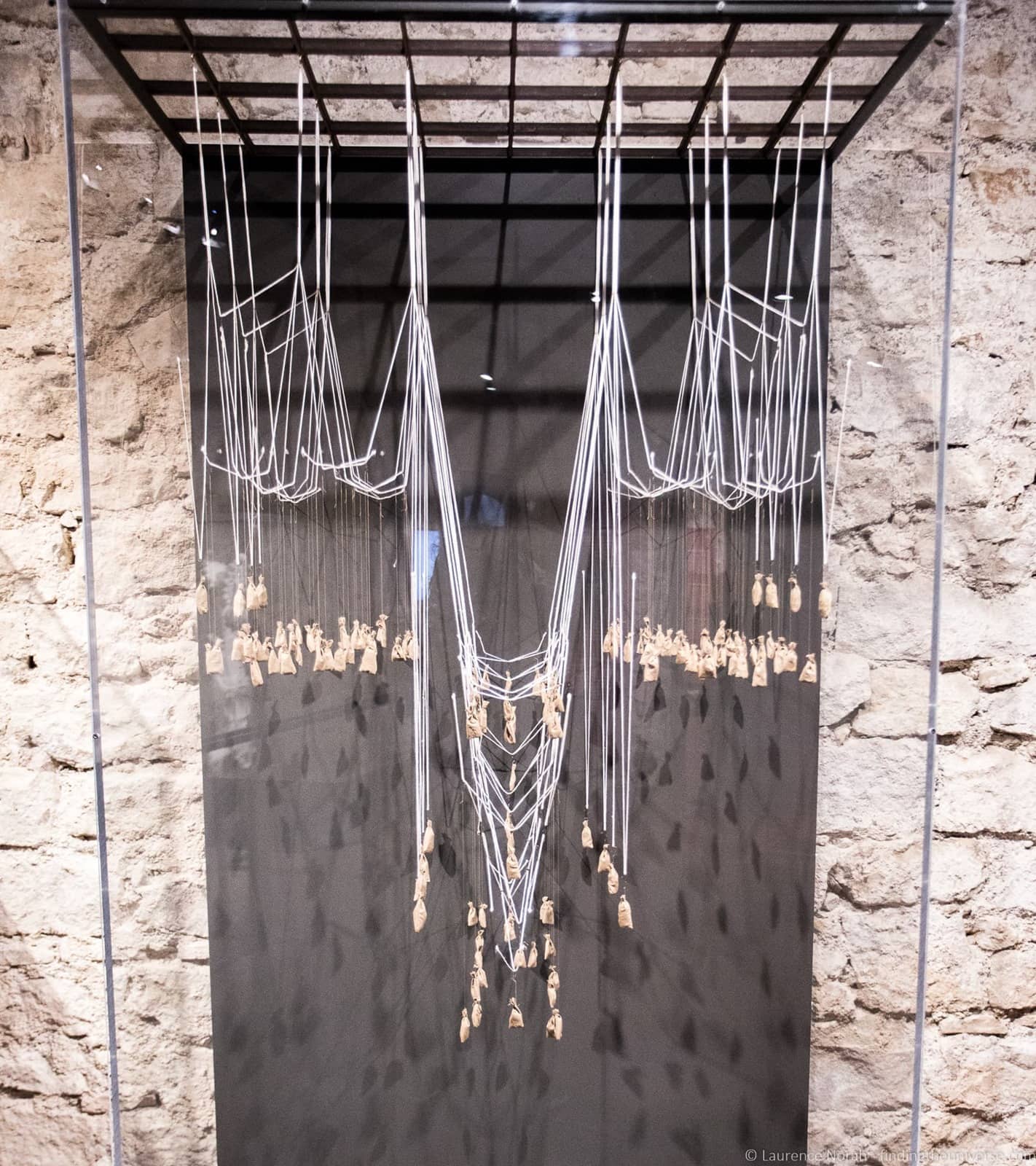
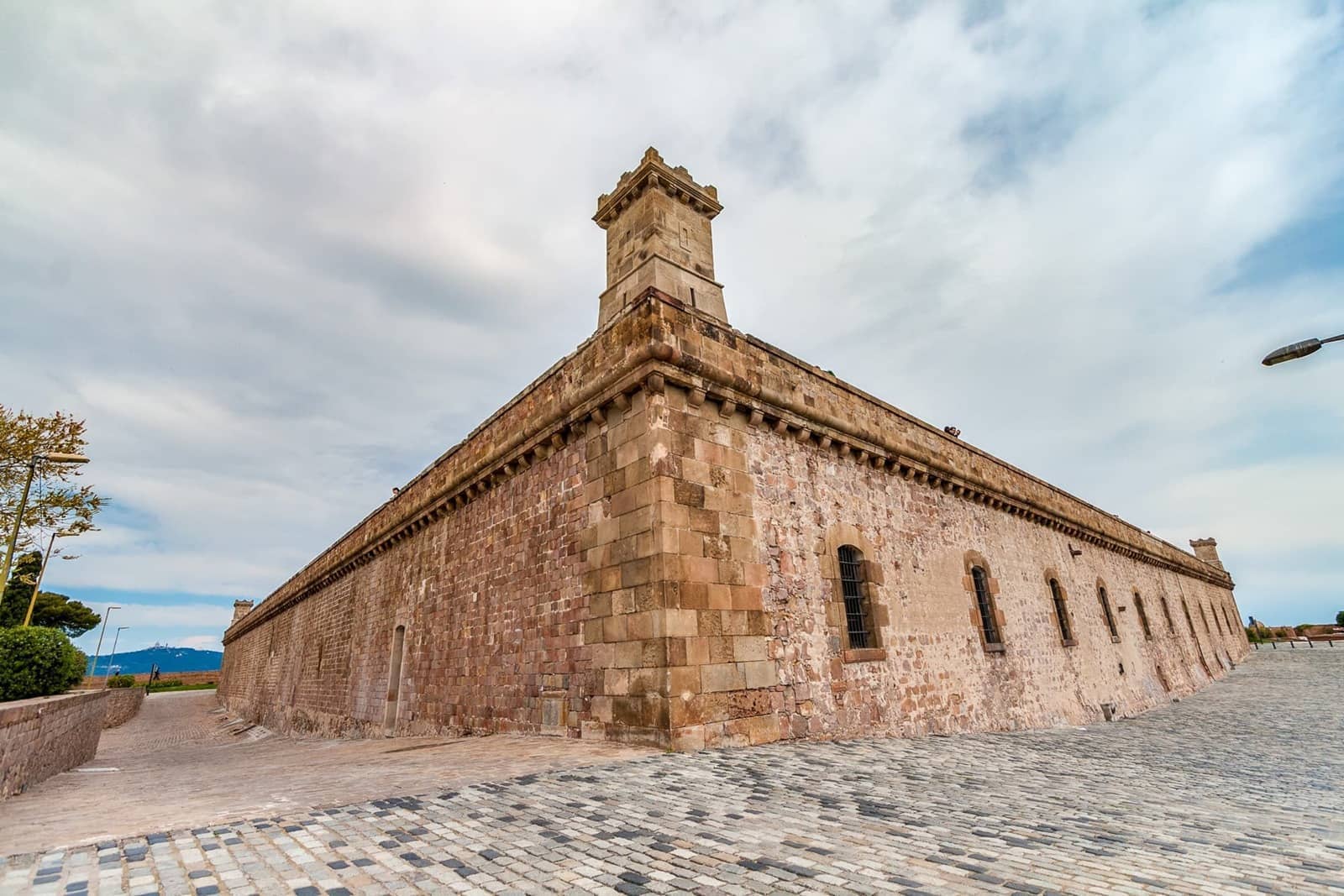
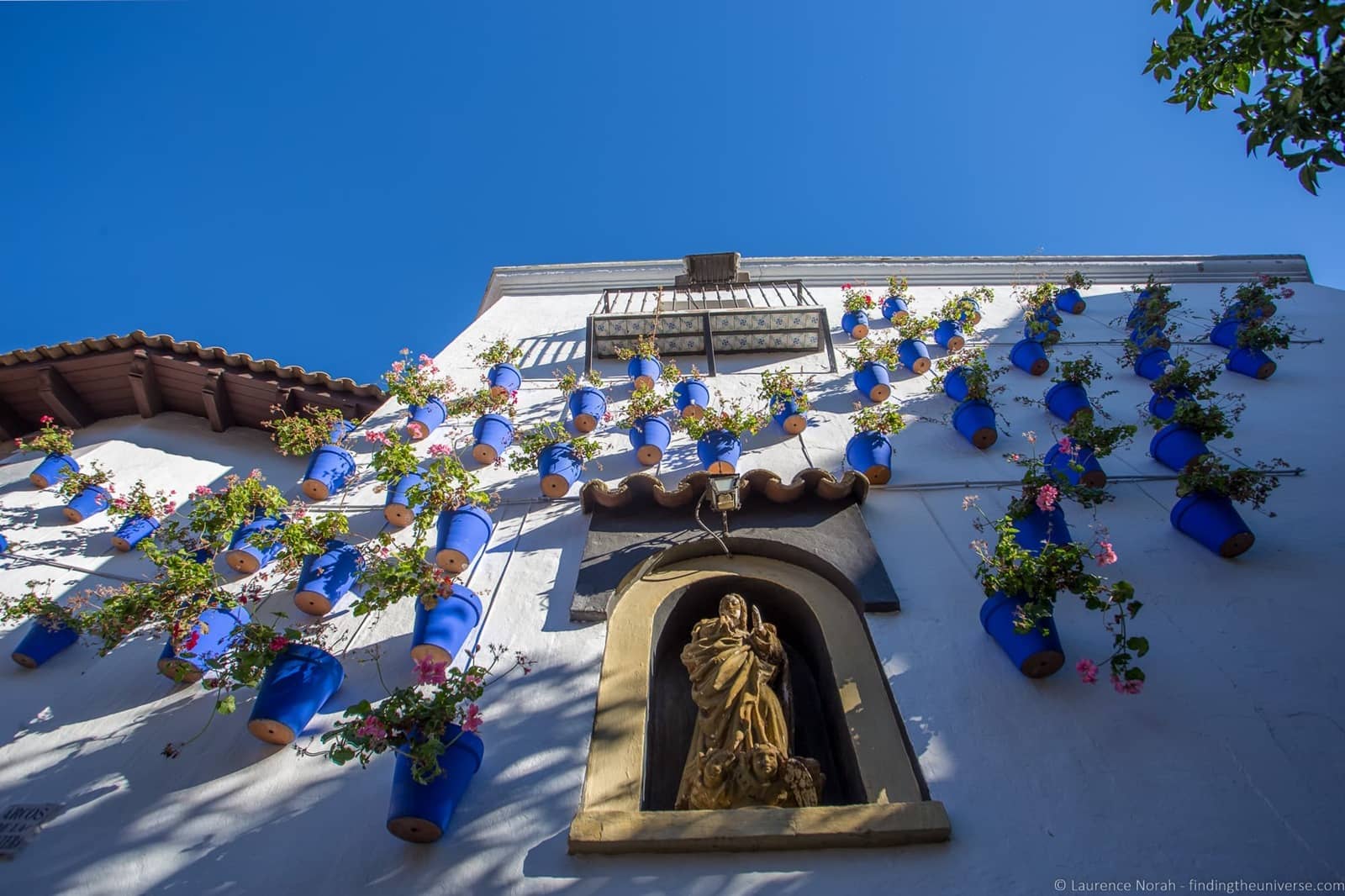
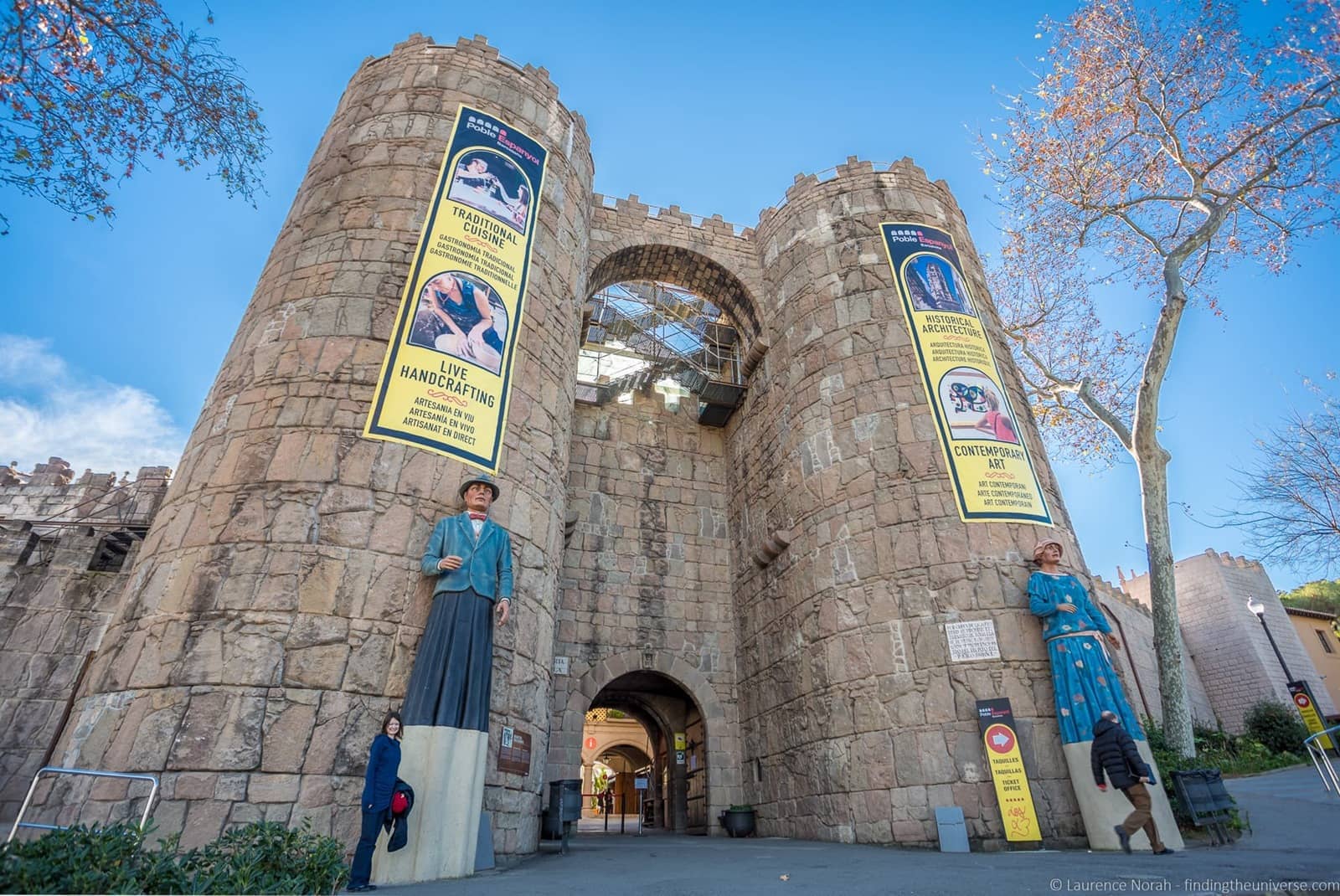
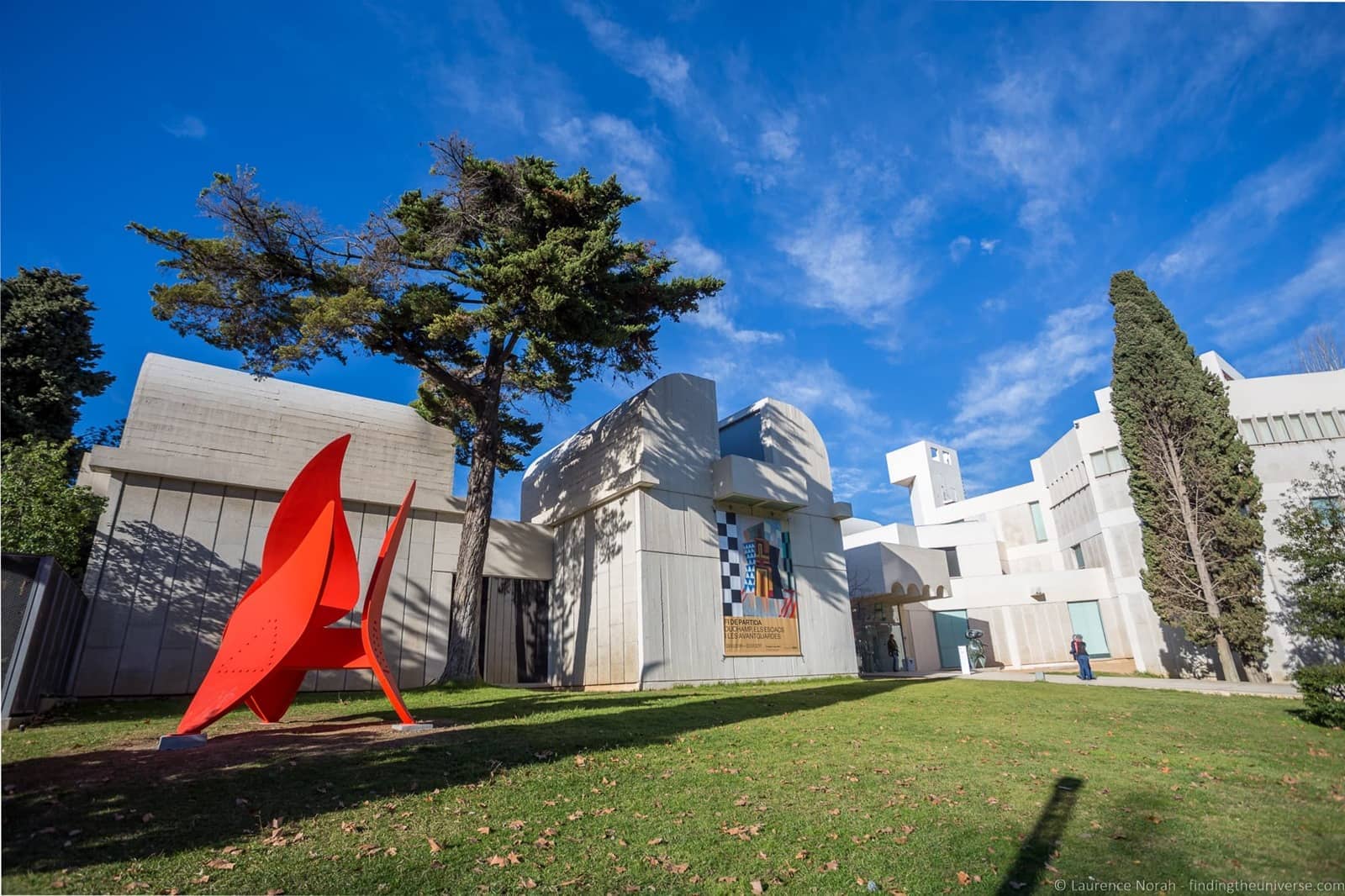
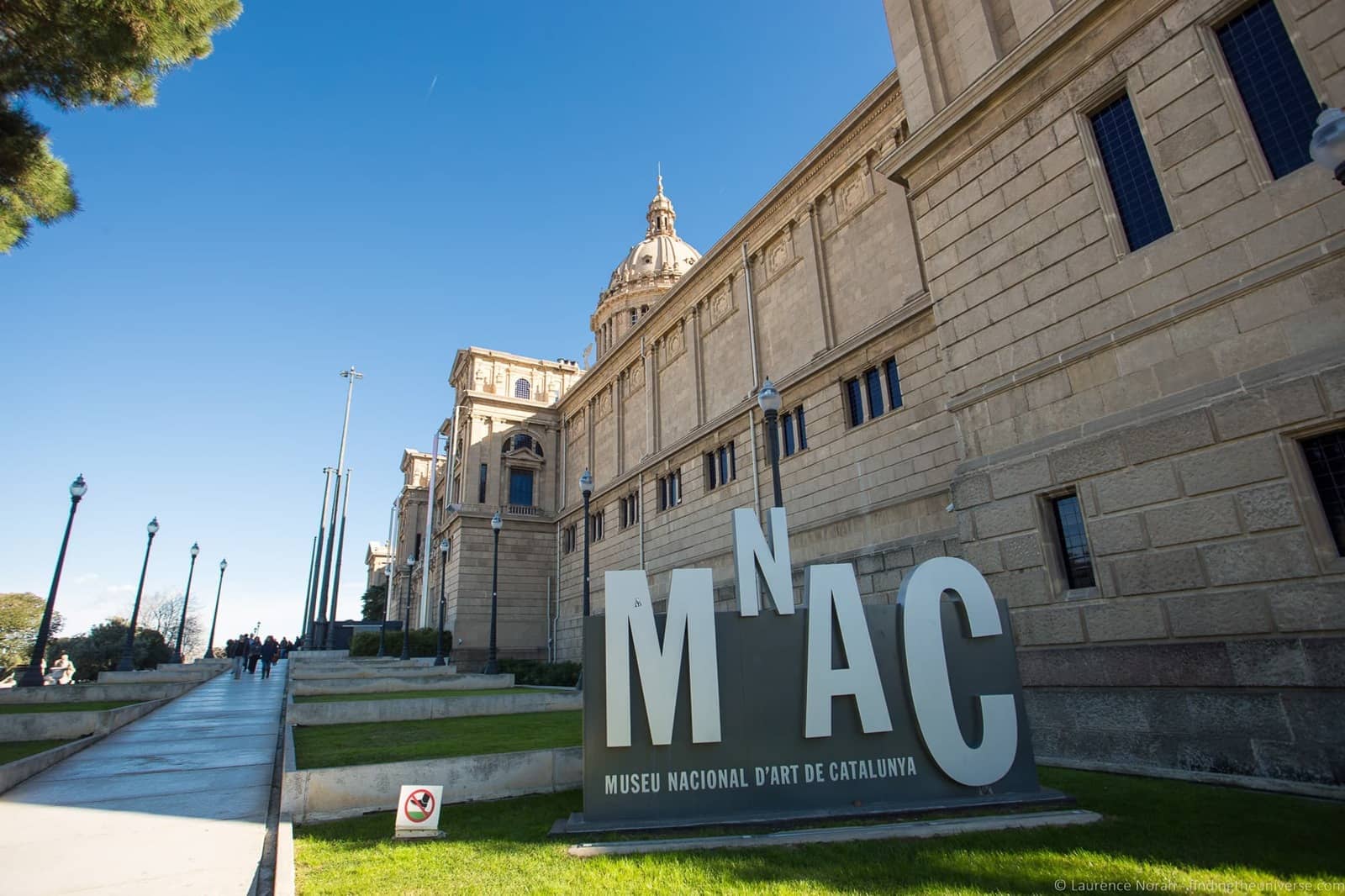
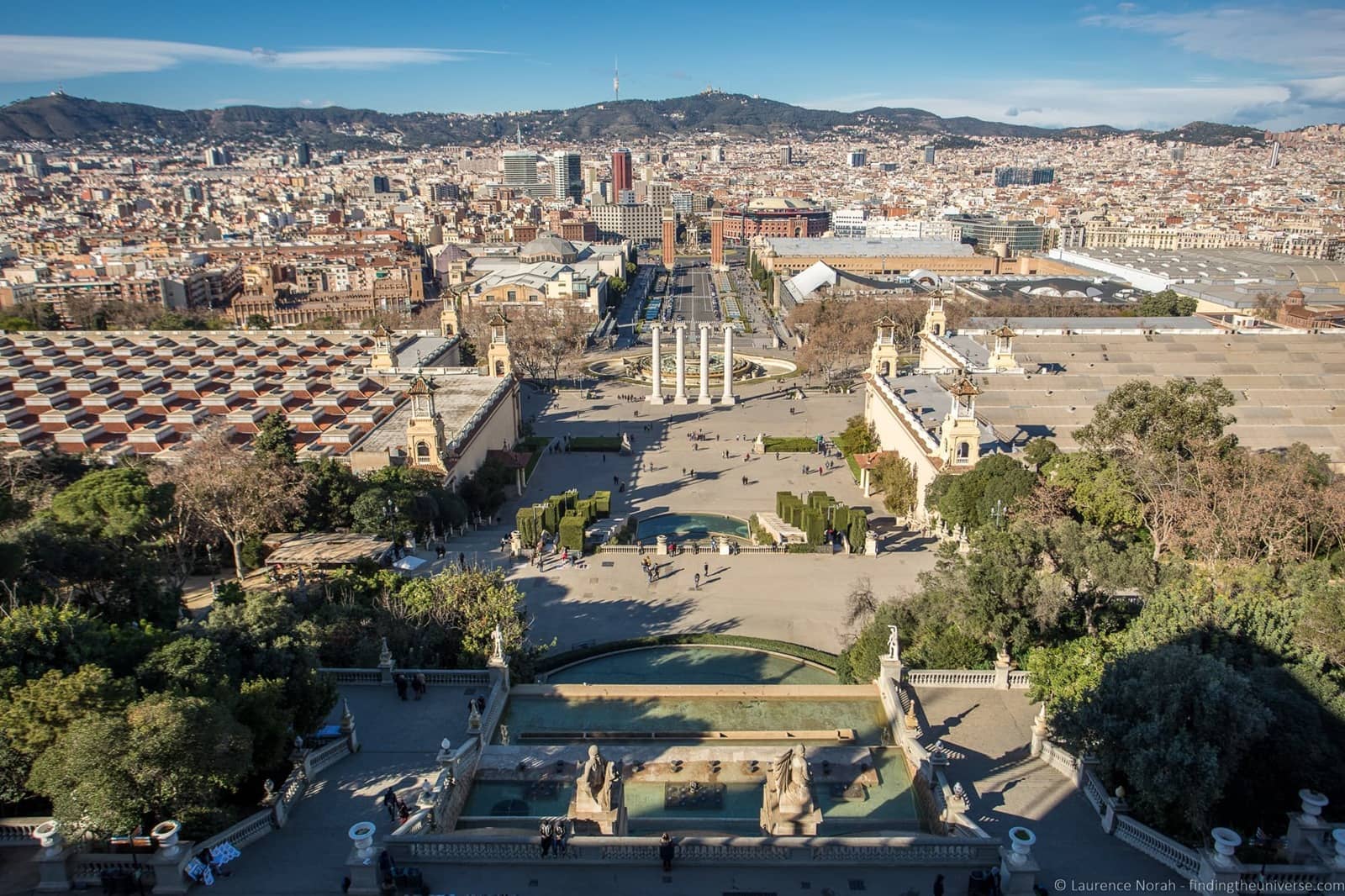
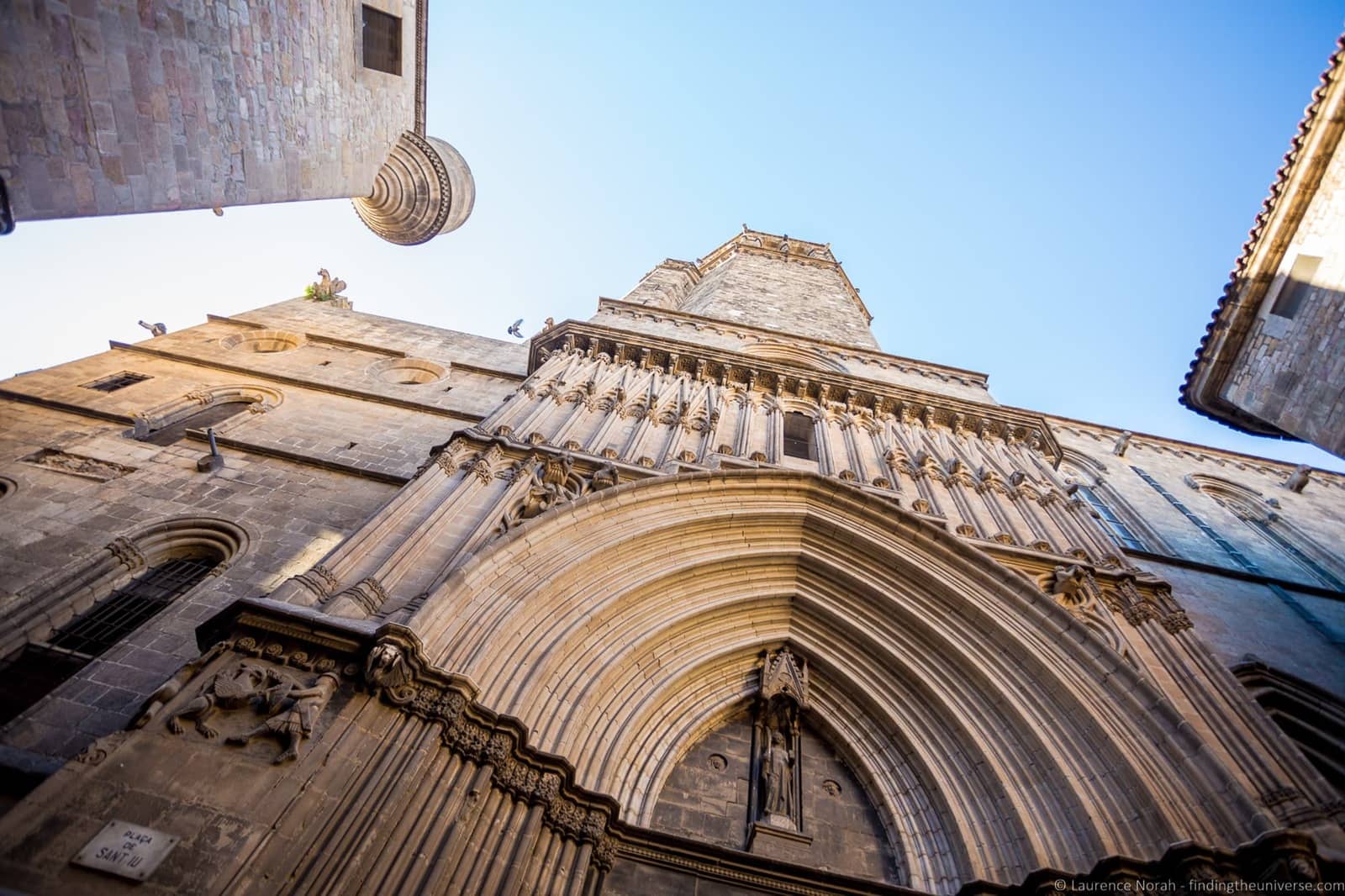
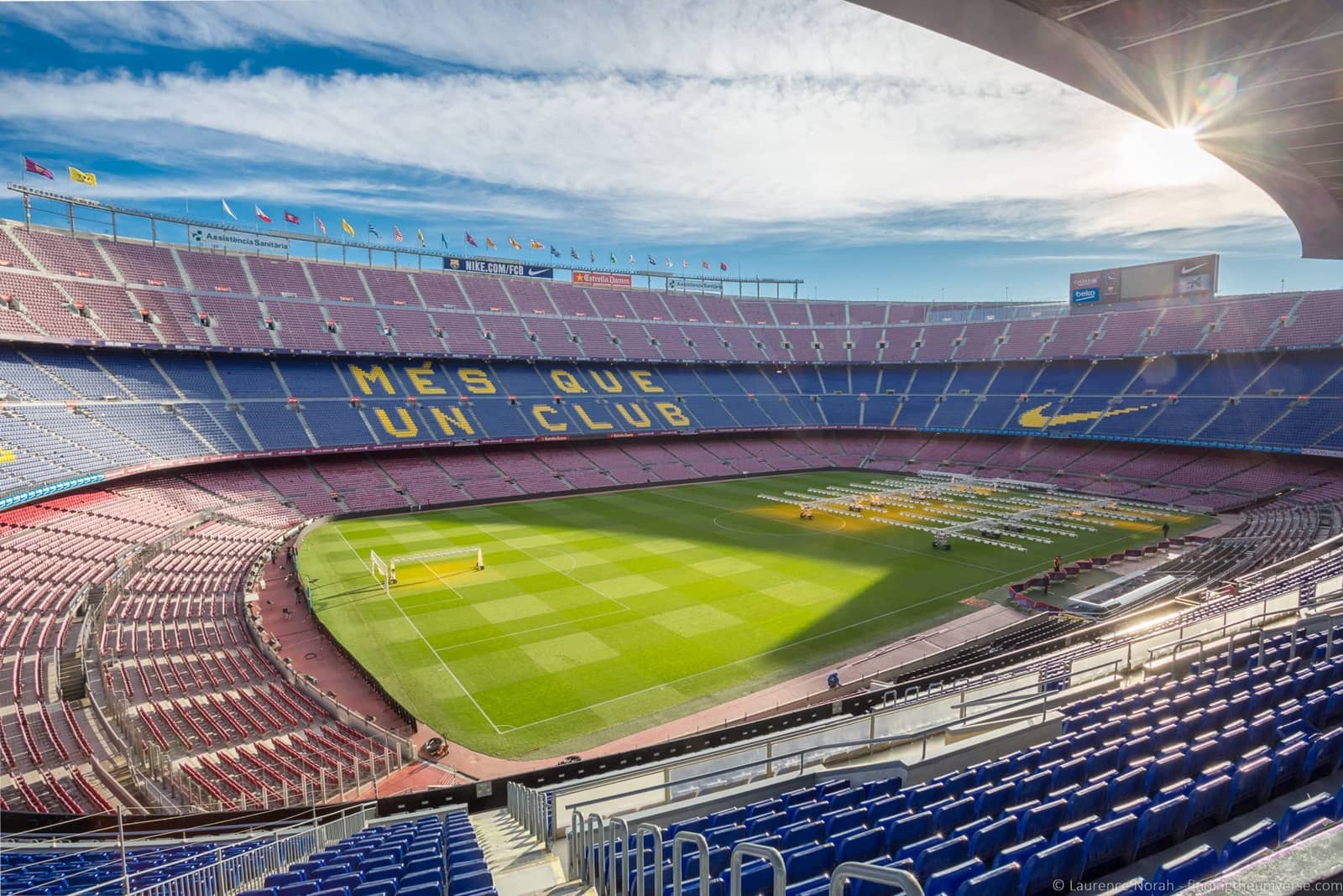
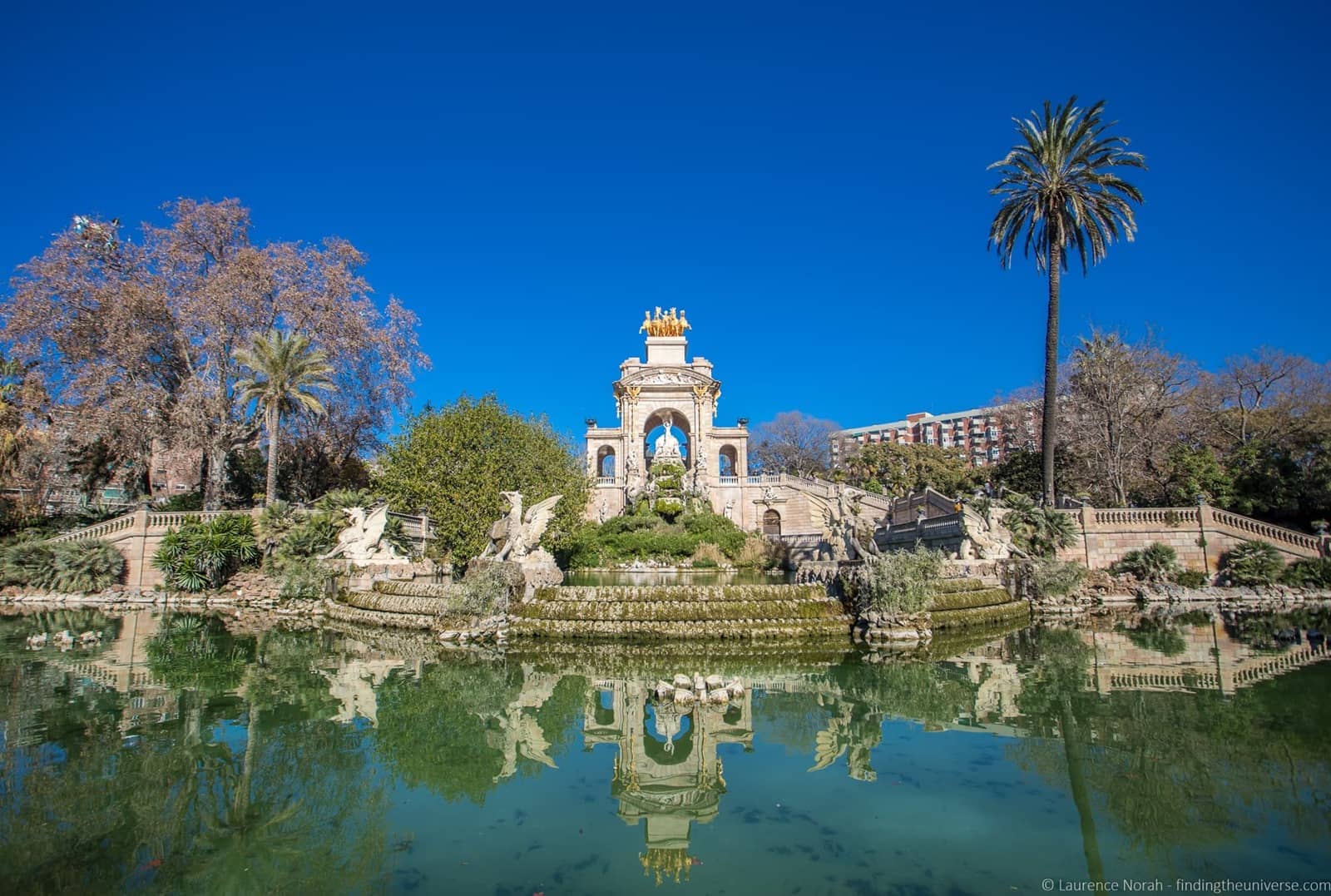
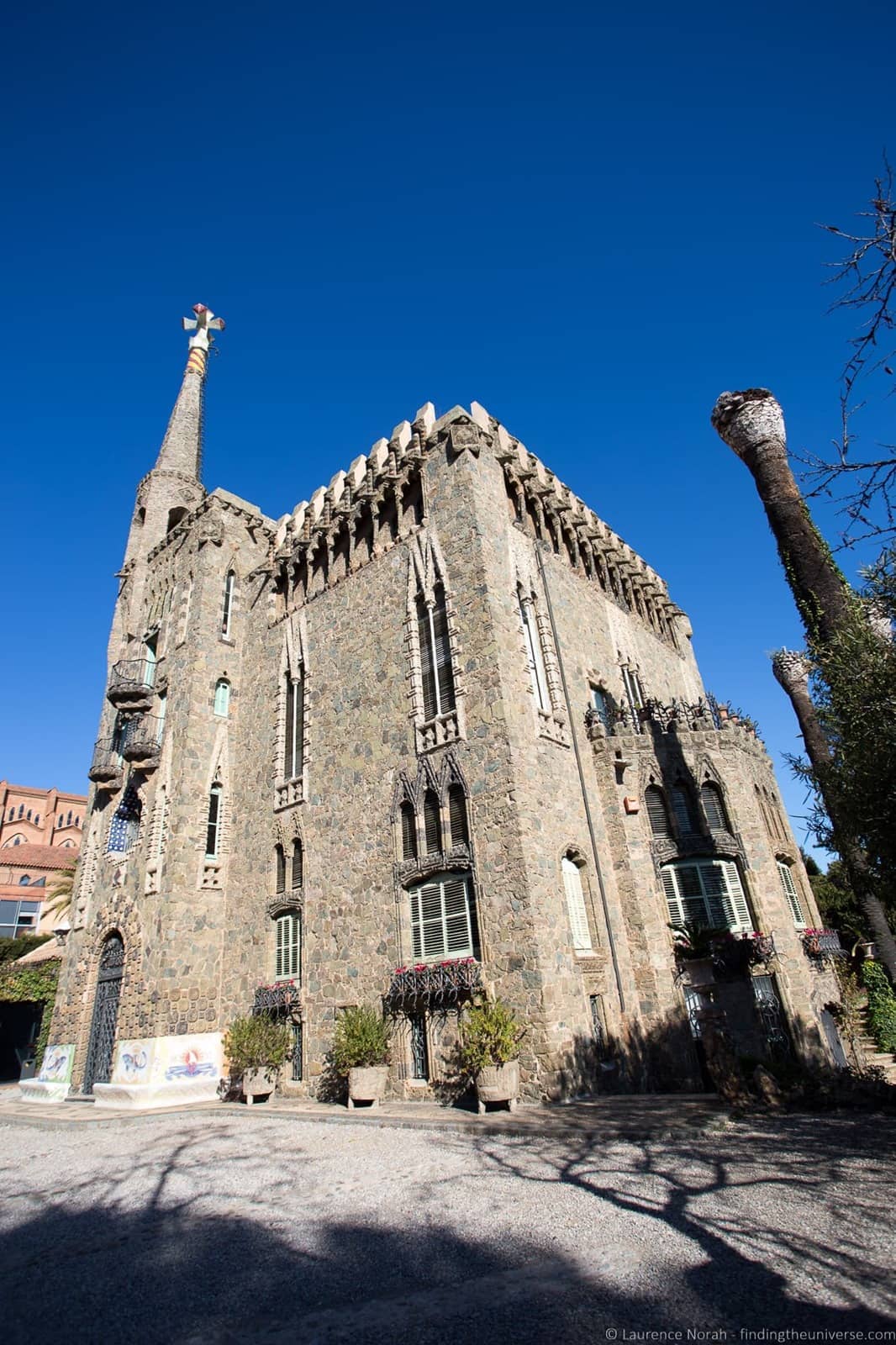
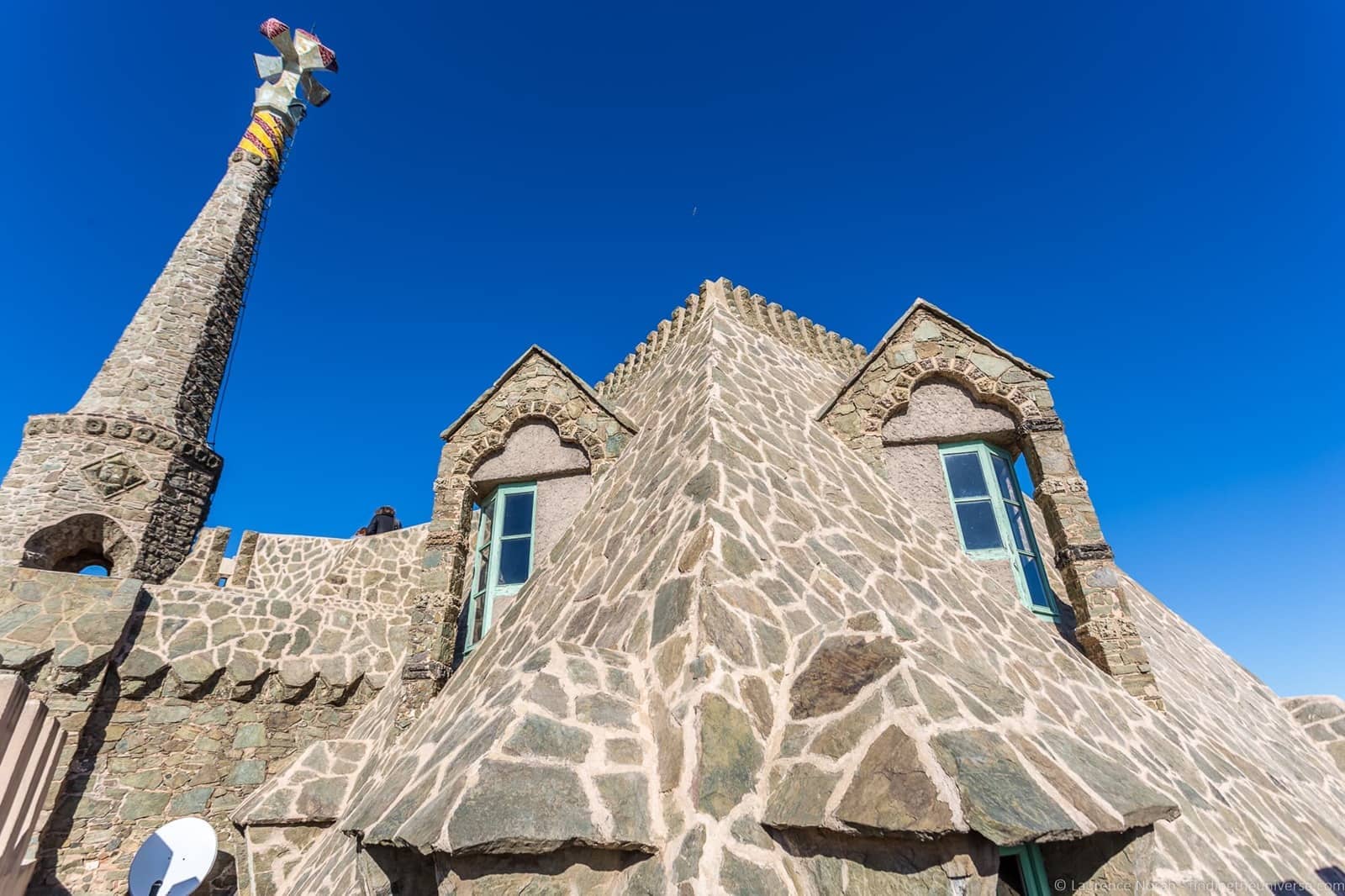
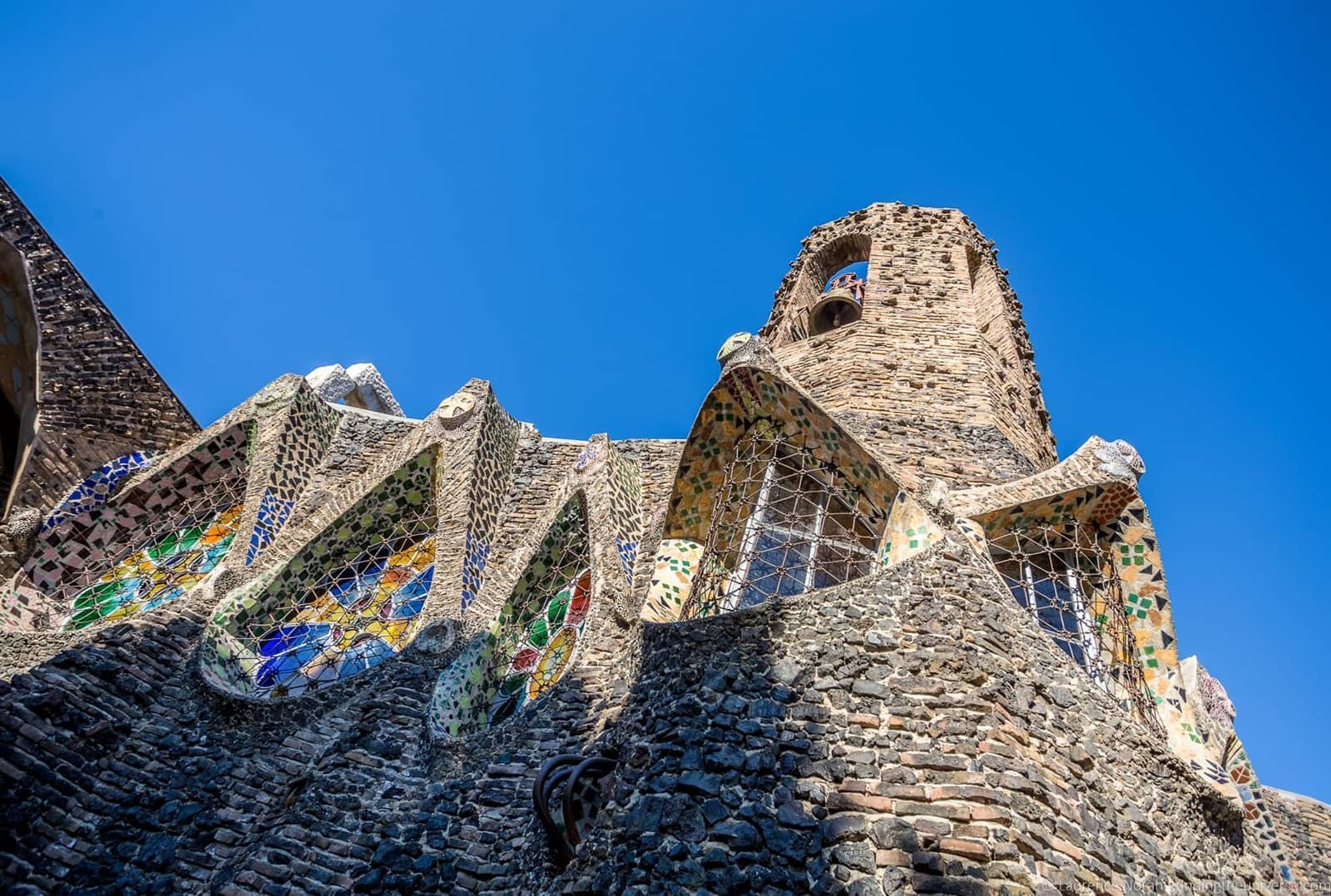
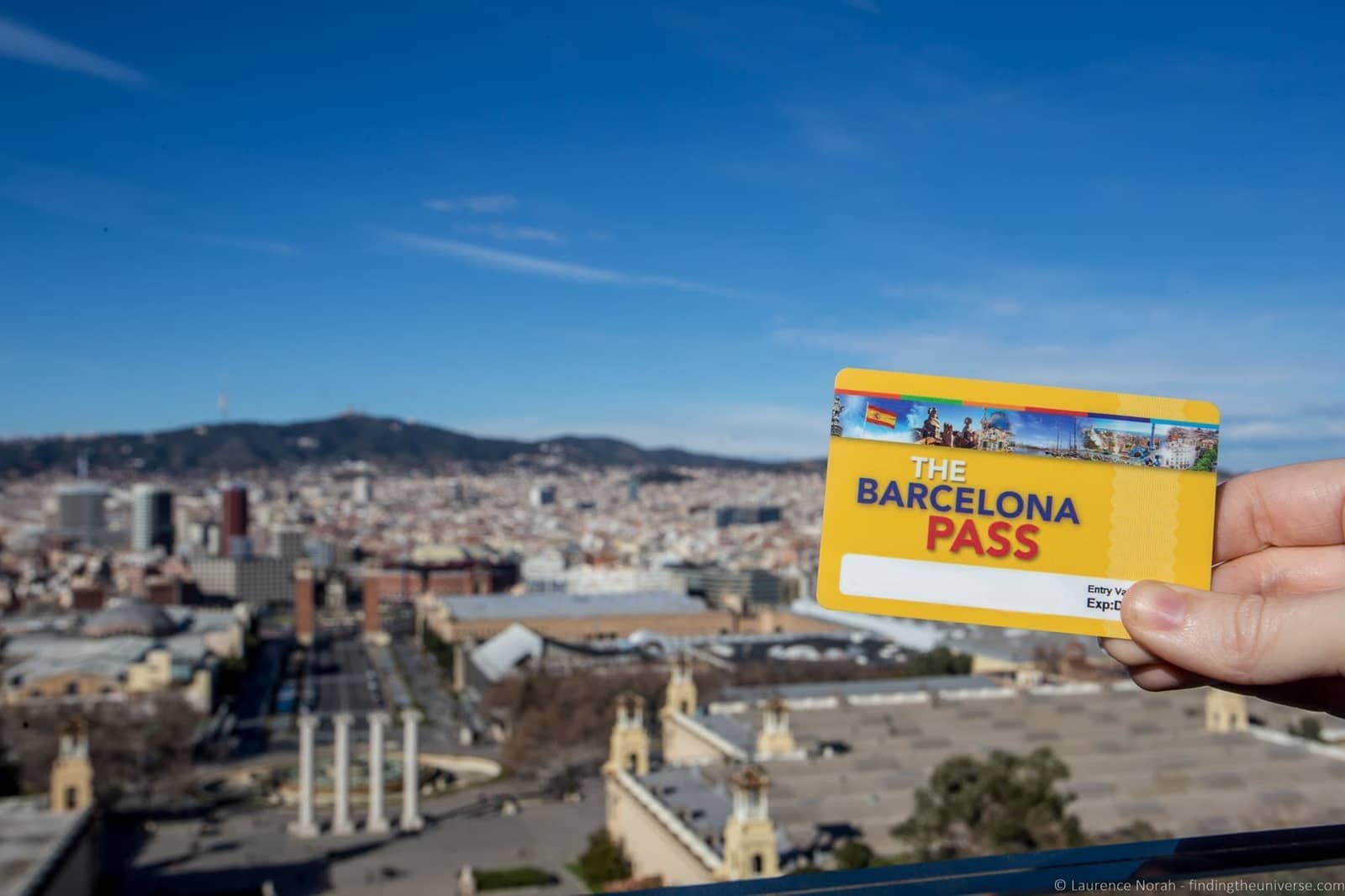
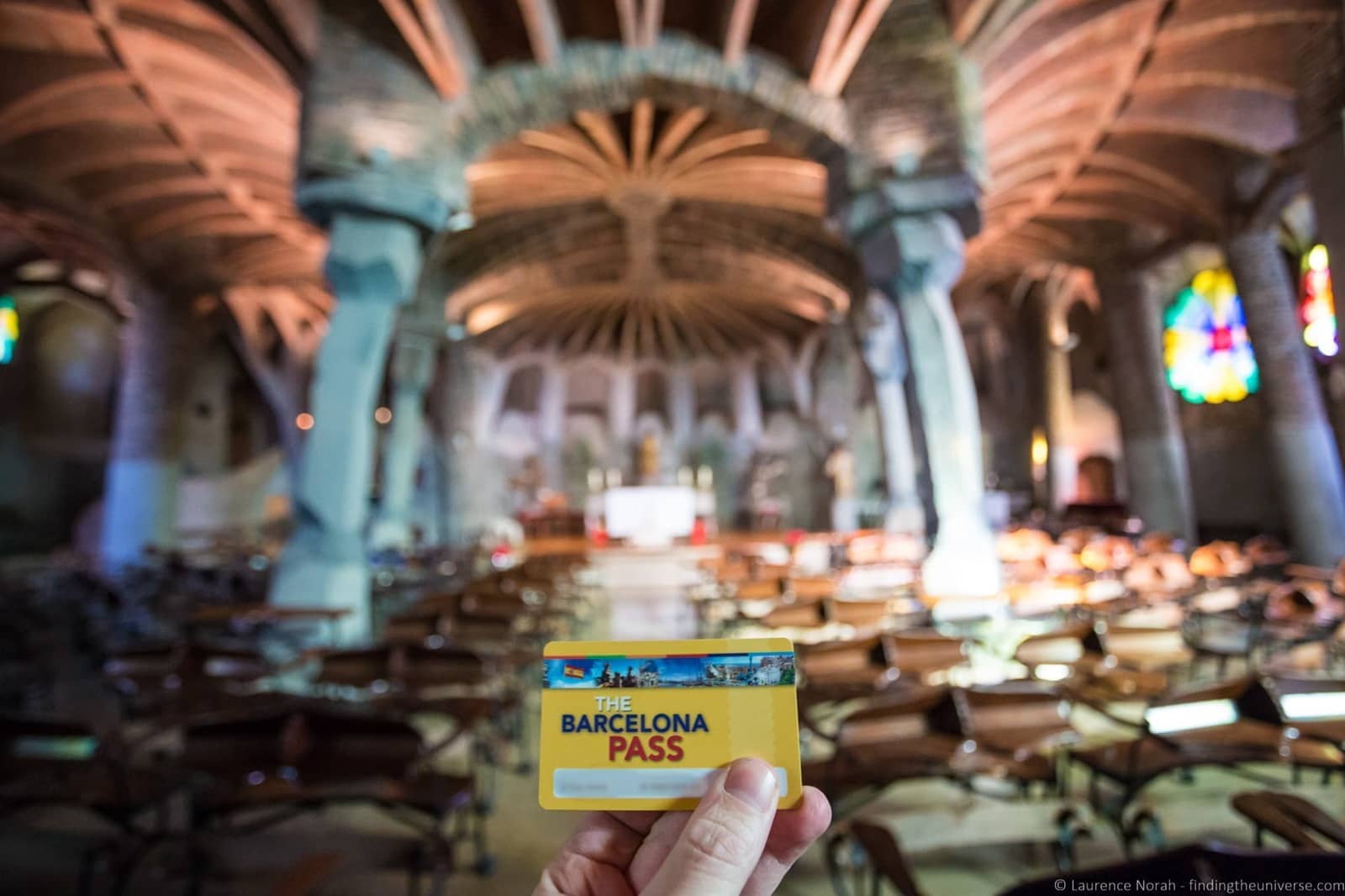
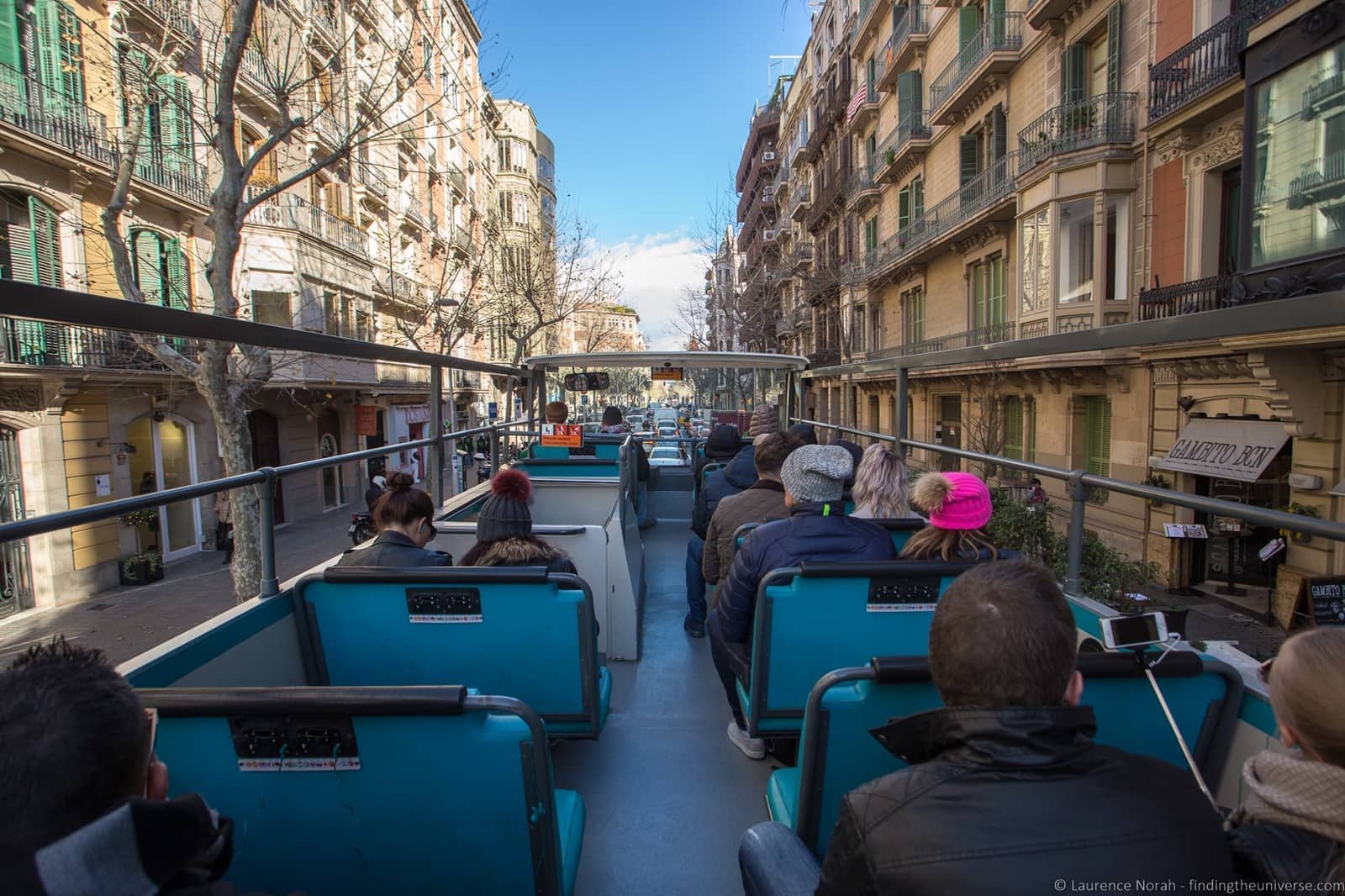
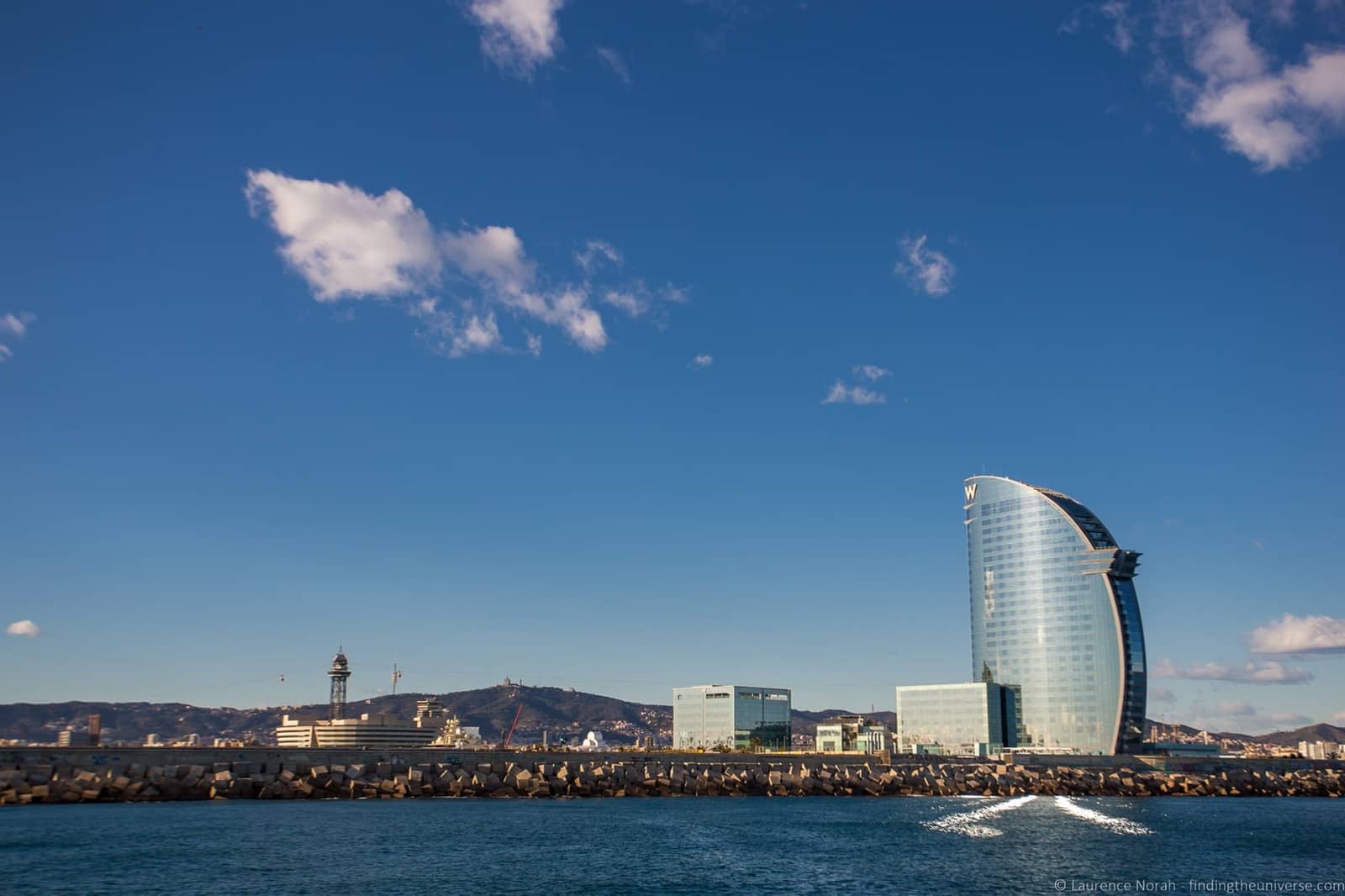
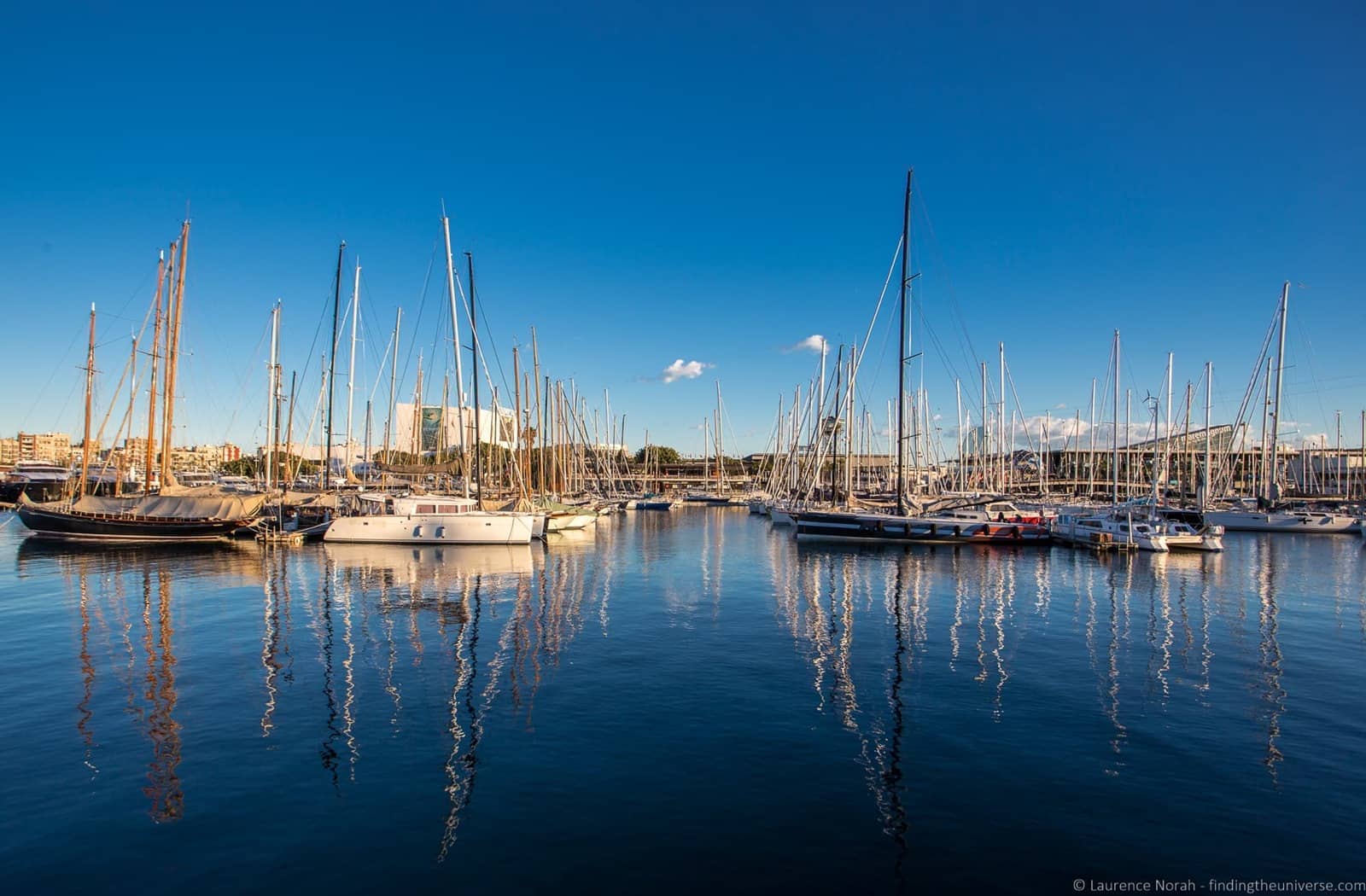
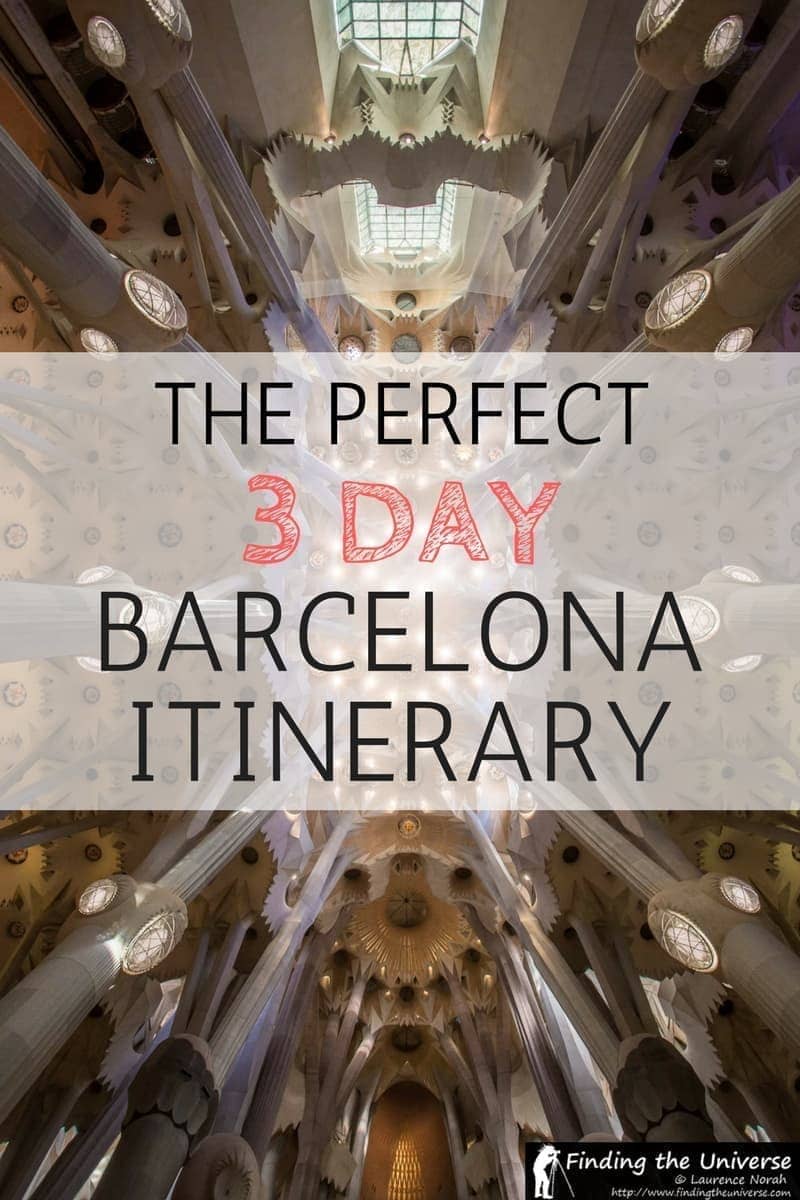
Ranger Roberts says
How Do you know what dates and times are available to purchase The Barcelona city pass ?? Ive put in multiple combinations all showing availability but when I try to confirm itinerary I get “Tickets you have selected are no longer available. ” I’m looking around the 26-29th of Sep ..
I see where time slots are sold out for Sagrada Familia but not for for any other selection including HOHO Bus.. So I dont know what or how many selections to change and what may options are .. Please help .. I’m on the Tibet website .
Thank you .. Ranger Roberts
Laurence Norah says
Hi Ranger Roberts,
So I just checked the Barcelona Pass on the Tiqets website and it seemed to let me pick most combinations and times around the time you are visiting. So I am wondering if there was a glitch when you tried? Otherwise, I’d recommend reaching out to the Tiqets team via their website to ask for some assistance.
Apologies I can’t be of more assistance, but do have a great time in Barcelona!
Laurence
Minal says
Hi Laurence,
I am planning a 3 day trip to Barcelona in the month of June and below is a schedule of attractions I have planned to cover in 3 days:
Day 1 – Casa Batlló, Casa Milá, Las Ramblas, La Boqueria, Parc de la Ciutadella, Mirador de Colom, Las Golondrinas Boat Tour
Day 2 – Camp Nou Stadium tour, Sagrada Familia, Park Güell, Chocolate Museum, Gothic Quarter – Barcelona Walking Tour, Los Tarantos Flamenco Show
Day 3 – Cost Brave full-day tour
Also, I would be using public transport from the airport to the city and within the city for 3 days.
Can you please help me with which Card I should get?
Barcelona Card (free public transport) or the Go Barcelona Card?
Also, if I choose the Barcelona Card – will I get a discount on tickets for below attractions :
1. Sagrada Familia
2. Parc Guell
3. Chocolate Museum
4. Camp Nou Stadium tour
5. Casa Batllo
6. Casa Mila
etc.
Laurence Norah says
Hi Minal,
Sounds like a great trip! So, first, let’s look at the individual entry prices for each attraction (Feb 2020 prices):
Casa Batllo – €25 (online)
Casa Mila – €24 (online)
Las Ramblas – free
La Boqueria – free
Parc de la Ciutadella – free
Mirador de Colom – €5.4 (online)
Las Golondrinas Boat Tour – €15.50
Camp Nou – €26 (online)
Sagrada Familia – €26 (online) (there is a €20 ticket, but this can only be used for the last two hours of opening)
Park Guell – €10 (online)
Chocolate Museum – €6
Gothic Quarter
Barcelona Walking Tour – €18
Los Tarantos Flamenco Show – €17
So you are looking at €172.9 for attractions so far.
For transport to and from the airport, the Aerobus from the airport is €5.90 one way, and €10.2 return.
For transport around the city, you can either get a transport card, or buy individual tickets. A transport card for two days is €16.30. You can also buy a pack of 10 individual tickets for €11.35. I actually think this might work out better for you as you should be able to walk to most places, with the exception of Camp Nou and Parc Guell. However, some of the passes come with the Hop on Hop off bus, which stops at those locations.
We usually recommend three cards in Barcelona, the Barcelona City Pass, the Go Barcelona Pass and the Barcelona Card.
You can see our full comparison of all the Barcelona passes here.
Let’s look at your plan and see which card would be best value for you 🙂
The Barcelona City Pass. This includes entry to the Sagrada Familia and Parc Guell, as well as a one-way airport transfer. There’s also a 1 day Hop on Hop off bus. Then you get 20% off a number of attractions, including most of the attractions you plan to visit, which also includes 20% off a Costa Brava day tour. The price is €88.
I added up the price of the pass overall once you take into account what is included and the discounts, and you’d end up paying €202.9. So on the face of it, not a great discount for what you want to see. However, it does include the airport bus one way (€5.9), and a one day HOHO bus, (€25). However, probably not the best fit for you still.
The Go Barcelona Pass. This includes many attractions you want to see, with the exception of Mirador de Colom, Sagrada Familia, Park Guell, Chocolate Museum and Los Tarantos. The pass costs €99.99 for two days. I added up the cost of the pass plus the tickets you have to buy, and it comes to €164.39 – so this is definitely a saving. Consider it also has the HOHO bus and lots of other attractions that you might consider visiting, and this is definitely an option to consider I think.
The Barcelona Card. This primarily features museums for free, and then has discounts on other attractions. It also includes a transport pass. The pass costs €41.4, which is quite low. However, you have to pay full price for Camp Nou, Sagrada Familia and some other attractions. I did the math, and based on your plan, the total with the card, attractions and discounted attractions is €184.8.
So far, I would say the best option is the 2 day Barcelona Card. You would have to pay for your own transport to and from the airport. However, you can then use the HOHO bus for your second day. I would suggest planning your day by looking at the route of the HOHO bus as it goes one way around the city. That said, as the timings might be quite tight on that day, taking public transport might be best as it will likely be faster!
I hope this all helps with your planning 🙂
Laurence
arlene says
i printed it thru the icon its 89 pages long!big print a lot of wasted space and paper
Laurence Norah says
Hi Arlene!
Thanks for the feedback. This is a new feature on the website so it is useful to have this feedback. I have adjusted the font size for the printable page – can you let me know how many pages it shows now for you? It seems to be different for different people, but hopefully this has fixed it. No need to print it again of course.
Best
Laurence
Marcy Lane says
Where can I find the print button. I don’t see it. We are going to Lisbon first with my husband and I and are meeting our daughter and her young family. Is this kid friendly? Where can I find the print button? I don’t see it? This is fabulous! Do you have itinerary for Lisbon too?
Laurence Norah says
Hi Marcy,
There should be a print button in the social sharing icons that float down the side of the post (on desktop) and are at the bottom of the post (on desktop and mobile). It’s a blue icon, just after the e-mail envelope (second icon along). Let me know if you don’t see it, and what you see there instead, as we’ve only just implemented this and so it might not be displaying properly everywhere. If you don’t see it, if you could let me know what browser you are using.
For Lisbon, we haven’t visited yet so we don’t have an itinerary unfortunately.
For Barcelona – this itinerary is kid friendly, although it will depend on the kid and their stamina for sight seeing! So you might want to cut it down a bit to make it more manageable depending on their age and interests 🙂
Have a great trip!
Laurence
Marcy says
The message said to sign up for the newsletter to get the itininery which I did. I haven’t gotten a confirmation that I signed up so I can get the itinerary.
thanks
Laurence Norah says
Hi Marcy,
Thanks for coming back to me. I can see you have signed up and still need to confirm. If you could check your spam/trash folders as sometimes the confirmation e-mails go there. If it’s not there, and you haven’t received it by tomorrow, let me know and I can confirm you manually,
Best
Laurence
Marcy says
It’s not in my spam. I just looked. Can you send me the itinerary to my email address? Would that work?
tensbums@cox.net
thanks
Laurence Norah says
Hi Marcy,
I’ve manually approved your request and so you should be able to access the print page now. If you put in your e-mail address it should work.
I’ve raised this as an issue with our e-mail provider as you should definitely have received our e-mail!
Let me know if you have any more problems 🙂
Laurence
TONY FEEHAN says
Hi,
I have never been to Barcelona, I travel in a couple of days for a 4 night stay with my wife, apart from going to the Camp Nou and the beach, I didnt really think there was too much there but you guide has changed my mind, a brilliant blog, really looking forward to going now, thanks you both,
Tony Feehan
Laurence Norah says
Thanks very much Tony – have a great time in Barcelona 😀 Do let us know how you enjoy it!
Laurence
DG says
Thank you Laurence (and Jess). I’m from the US, currently in Paris with my family, and taking off to Barcelona later today to get away from everyone. Original plan was to camp out in a hotel and get some work done in peace (us, Americans, and our stupid deadlines), but after reading your article it looks like I’ll be paying attention to more than the laptop screen. I’m only going for a day or two, but your extensive guide will be indispensable to making the most out of the short trip. Cheers!
Laurence Norah says
Our pleasure! You definitely won’t be short of a thing or two to do in Barcelona 😉 Even if you only manage to see a few sights in between working, it will be worth it 😀 Have a great time, and good luck with the deadline!
Laurence
Nick Wells says
Hi,
A great post with the most amazing and insightful advice. My wife and i are taking our daughter in October for 3 days and we will certainly utilise your travel advice – thanks.
Quick question we appreciate that Barcelona has multiple options re accommodation and we have based on price and availability got reduced the list to 4 hotels. Have you stayed in any,c an you give advice re location etc
Leonardo Hotel Las Rambals (£376)
Room Mate Carla (£398)
H10 Universitat (476)
Royal Ramblas (£446)
Many Thanks ..
Laurence Norah says
HI Nick,
Thanks for your comment 🙂 We have stayed at the Leonardo Hotel on Las Ramblas and thought it was nice. The street was relatively quiet (it’s a block or so back from Las Ramblas itself), and the breakfast was very comprehensive if you opt for that option. Location wise it was within walking distance to most of the highlights, otherwise very close to a metro stop for the other sights.
We’ve not stayed at the others so can’t comment specifically on those 🙂
Have a great trip!
Laurence
Isha says
Thank you so much for sharing such a wonderful detailed itinerary plan. This really helps. We are planning our first trip to Barcelona in mid November. Is it a good time to visit Barcelona? How about weather.. Will it be pleasant or very cold in November. Appreciate your inputs.
Laurence Norah says
Hi Isha,
Thanks very much, it’s my pleasure. November it will definitely be a bit cooler in Barcelona, although not too cold – probably between 10C in the evening and as high as 20C in the day time. So pretty perfect for sightseeing in my opinion. If you are unlucky and it is windy, then it might feel cooler. So you would want to pack some warmer clothes, but overall it should be pleasant 🙂
Have a great trip!
Laurence
Christopher Gladney says
Hi, this is extremely helpful! Similar to Rome, is there a Google Maps to accompany this itinerary?
Laurence Norah says
Hi Christopher!
A great point! I have added the map now 🙂
Best
Laurence
Marie Michelle Aurélus says
Thank you for taking the time to put together such useful and comprehensive information on the website. I am from Haiti and i will be traveling tomorrow to Lisbon and Barcelona . I am lucky to come across this article the day prior to my departure I can’t wait to visit the historic and beautiful sites you have recommended.
Thank you and kindest regards
Marie Michelle
Laurence Norah says
Our pleasure Marie – have a fantastic trip!
Laurence
Susan says
This article was so helpful, we are going next May for three days before our cruise and it sorted out a lot of things. A friend told me about a wine and concert they did on the roof of a building have you ever heard of one?
Laurence Norah says
Hi Susan!
Delighted to be able to help 🙂 We’ve not actually heard or done one of these, was your friend able to give you any more details? Was it a performance venue or something arranged at a hotel?
Laurence
April says
Hello.
Your site is so helpful! Thank you.
Do you know if the magic fountain is on during the day? I know it would be without lights and music. I’m just wondering if it runs or they turn it off during the day. I can’t imagine that fighting all the crowds at night would be a pleasant experience while traveling with two teenagers, but we’d love to see it on our way down from the castle.
Thanks!
Laurence Norah says
Hi April,
Our pleasure! So, the Magic fountain sound and light show only runs in the evenings, you can see the schedule here:
https://www.barcelona.cat/en/what-to-do-in-bcn/magic-fountain/magic-fountains-show-times
However, parts of the fountain do run in the daytime I believe, although not with the choreographed sound and light. I would urge you to see it at night if you can though, it’s quite spectacular, and it’s a big space so there is room for lots of people 🙂
Have a great trip!
Laurence
April says
Thank you, Laurence.
I’ve been looking for a good, casual restaurant for paella in Barcelona. Do you have any recommendations? We also took you up on your recommendation and booked a balloon ride with Vols de Coloms. We’re staying in Santa Pau before and after the balloon and are looking for a casual but good local restaurant between Olat, Santa Pau and Besalu and are are traveling with two teenage boys. We will have a car as well. Do you have any recommendations?
Thanks again for your help!
Laurence Norah says
Hi April,
We don’t have any paella recommendations for Barcelona – the dish is actually from Valencia, so whilst it is of course available in Barcelona, it’s not a local specialty. For tapas though we can recommend La Alcoba Azul which is excellent.
For Santa Pau, we have dined at Cal Sastre which is also fantastic 🙂 We can recommend reading our specific regional guide for more ideas:
https://independenttravelcats.com/la-garrotxa-travel-guide-volcanic-catalonia-spain/
Have a great trip!
Laurence
april says
Thank you. Great news about Cal Sastre since that is where we are staying.
And, thanks for the information about the paella. That helps me to understand why I am having trouble finding a place. Have you heard of Bar Mut or Casa Lolea in Barcelona? I’m going to add La Alcoba Azul to our plans. Thank you!!!!
Laurence Norah says
Oh, you’ll have a wonderful time there. It’s so picturesque and peaceful 🙂 I have to be honest, I have not heard of either of those locations. That doesn’t mean much though, there are thousands of restaurants in Barcelona. We usually just go by recent reviews on Google Maps to find someplace!
Catherine says
Hello!! What a great blog you have! I am looking for recommendations regarding best part of the city to stay in order to take in most, if not all, of the items on your 3 day Barcelona itinerary. Looking for a 4* or better hotel. Another possibility would be an Airbnb property to rent. Saw one available in Eixample – would this be a good location option? Also, what are recommendations regarding the Salvador Dali Museum? Many thanks!
Laurence Norah says
Hi Katherine!
Thank you very much! So there are lots of hotels in the city that meet your criteria. The one we stayed at most recently which has a great location is Hotel Barcelona Catedral , which is right in the gothic quarter and perfect for getting to everything. The Eixample is a good area as well.
For the Salvador Dali museum, the easiest way is to take a tour that goes from Barcelona, such as this one: A full day trip to Girona and Figueres. That will get you to and from the museum, plus you’ll have some time to explore Girona which is also lovely.
Have a great trip – let me know if you have any more questions!
Laurence
Larry Krantz says
Just came across your 3 Days in Barcelona on the internet while planning for our trip in October. What a wonderful, comprehensive itinerary. We are thinking of starting our stay by taking a city tour bus around the City to get a quick overall taste, and then following your itinerary. Any recommendations for the bus tour? We’ll be going on to Morocco so any thoughts on our getting there?
Thanks very much.
Laurence Norah says
Hi Larry – thanks very much!
So we’ve only taken the official bus tour, which is included in the Barcelona Pass. It’s the Hop on Hop off bus tour which goes around the majority of the sights, and has an audioguide in a variety of languages. So that would be the one I recommend. If you aren’t getting a Barcelona Pass, or one of the other passes which includes a bus tour, then you can buy an individual ticket for that here.
From Barcelona, there are direct flights to Marrakesh if that’s where you are heading. The easiest way is going to be to fly. We usually use Kiwi to check flights as it’s one of the few comparison tools that includes most of the budget airlines. Just be sure to add any bags to get the true price 🙂
Let me know if you have any more questions, and have a great trip!
Laurence
ferdie syfu says
I have read your thorough blog on a three day stay in Barcelona. It will be our first time traveling to barcelona , me and my wife and both 50 years old. we will be coming from Madrid by train and staying for 3 nights in June. i heard the weather is not cold this time of the year. are the three days enough or shall we stay for a fourth?
thank you likewise for accommodation recommendations, as we have not planned this trip yet, we are still looking, we normally travel by train or by bus to get around, so we would normally choose a lace close to stations.
Laurence Norah says
Hi Ferdie,
So there is a lot to see in Barcelona! We’ve visited many times and always find more to do. So you will certainly have plenty of options if you decide to stay a fourth day 🙂
For accommodation, there’s a great metro in Barcelona and it shouldn’t be hard to find a stop close to a hotel as there are lots of stops. So that shouldn’t be hard.
Have a great trip!
Laurence
Anna says
What a great itinerary! We will be visiting Barcelona for 4 days in January. Is the boat tour offered in January?
Laurence Norah says
Hi Anna!
Yes it is, although I believe it only goes once a day rather than multiple times a day, so you will want to check the timetable so as to be sure not to miss it. You can see that here.
Enjoy!
Laurence
Jocelyn S says
Hi there, great article. Any tips for a family of 11 adults and 1 toddler (3yrs old), 1 adult can’t walk for long distances or time..maybe an hour at most. Any suggestions on where to stay for a big group?
Thanks ahead of time.
Laurence Norah says
Hi Jocelyn!
So my tip would be to take advantage of the Hop on Hop off bus, as that will get you to all the sights in the city and minimise walking time. Alternatively, the Barcelona metro system is also very good and goes to most locations on this itinerary.
For accommodation, I’ve not travelled in large group. However, I would suggest looking for a multi-room apartment which will likely be the most cost effective option as otherwise you will have to pay for a lot of individual hotel rooms.
For example, this search on booking.com is set up to just show apartments that will take up to 11 adults. You will have to adjust the dates of course, but there are a variety of options, and the prices are very reasonable if you calculate it per person (you should be able to get a central apartment for between $30 and $60 per person per night, depending on when you visit I think).
Robin N Hall says
Thank you so very much for such a comprehensive site on what to do, when and how much. I really appreciate all the time you have saved us. We will be attending a family wedding in London in September and then thought we’d fly to Barcelona for a 3 day visit and we will likely follow your itinerary to the T. Thank you again!
Robin
Laurence Norah says
Our pleasure Robin – thanks very much for taking the time to let us know you found the content useful. It’s why we write it, and it’s lovely to hear feedback. Have a wonderful trip – we’d love to hear how it went!
Steve says
Hi Great site and itinerary – as a relative neanderthal IT etc do you have this a printable version – thanks Steve
Laurence Norah says
Hi Steve,
So this isn’t an option we currently have on the site. We know that most browsers do have a print function, so that would likely be the easiest option for now.
Best,
Laurence
Laurence Norah says
Hi Steve,
I appreciate this might be a bit late for your trip, but for others reading and in case you use our site in the future for other trips, we’ve now added a print button on all our posts 🙂
Happy travels!
Laurence
Carol L says
Weather in mid May, based on what I can tell from reading it seems dresses and pants and short sleeves for day time with jacket at night—-is that correct based on your experience? Also any recommendation for local place to see Flamenco dancing?
Laurence Norah says
Hi Carol!
That sounds about right – the nights tend to cool down a bit. It might also be quite warm in May (climate is so hard to predict), so you may want shorts or lighter, shorter skirts.
For Flamenco, there are a lot of options. Tablao de Carmen and Palau Dalmases Flamenco are both very highly rated, although we haven’t attended either. However I would definitely check out online reviews and go for the best reviewed options 🙂
Have a great trip!
Kevin says
Thanks for your Itinerary for major tourist cities and I found it very usefully when I planed my trip to Paris last summer.. I basically followed your itinerary daily, used Paris Pass and had wonderful time.
This year I plan to visit London and Barcelona and plan to follow your itinerary of both cities.. Does this Barcelona itinerary comes with a google map like other cities?
Laurence Norah says
Hey Kevin!
I’m delighted that you have found our content useful for your trips! You are right, this post is missing a map. I will add one in the next few days – sorry about that!
Laurence
Anita says
Hi Laurence,
We will arrive Barcelona for a 12 nights cruise trip in end of May and stay behind for 3 days after disembark. Can I ask what sort of pass are suitable for us as we have 6 hours on first day then boarding on the cruise at evening. After 12 nights of the cruise, we will stay behind of 3 days in Barcelona. This is our first time visit and I don’t know what pass and travel card are suitable. I am not quite sure how to work out the 3-day Barcelona Pass plus Travelcard because if we activate on the first day then it seems not worth for a pass. Please advise for any better idea.
Thank you
Laurence Norah says
Hi Anita!
It definitely depends on which attractions you want to visit in Barcelona. My suggestion would be to get the three day Barcelona Pass for your three days, but not to activate it on your first day. Instead, I would suggest maybe visiting the Sagrada Familia on your first day as that is not included on the Barcelona Pass. Then you can see the other sites when you come back from your cruise. You also might not need the travel card – public transport is very cheap in Barcelona, and you can take the metro to most locations for around a euro a ride if you buy a 10 journey travel card (which can be used for multiple people). I do however urge you to see what attractions the pass covers before deciding. To help out, we have a guide to all our favourite Barcelona Passes here:
https://independenttravelcats.com/barcelona-discount-passes-barcelona-card-vs-barcelona-pass-vs-barcelona-museum-pass/
I hope this helps – let me know if you have any other questions!
Laurence
Anita says
Hi Laurence,
Thank you so much for your suggestion and it helps us to make the decision.
Cheers,
Anita
Laurence Norah says
My pleasure Anita – have a great trip!
Karen says
We will be in Barcelona in March and was wondering what were your top choices for restuarants and food. We will also be visiting Lisbon and Paris during this trip and we are all about food experiences any suggestions would be greatly appreciated. Thank you
Laurence Norah says
Hi Karen!
So we don’t currently have a guide to where to eat in Barcelona as we tend to just pick the places with good deals and good recent reviews on Google Maps. However, we do have a guide for Paris which you might find useful:
https://independenttravelcats.com/paris-lunch-splurges-saving-money-on-michelin-starred-restaurants/
We’ve not visited Lisbon yet, so can’t help there I’m afraid!
have a great trip, and let us know if you have any more questions 🙂
Laurence
Fabiana says
I’m so thankful for this!!! Very very helpful and great readingg! ✵✵
✵Greetings from Brazil✵
Laurence Norah says
My pleasure – I hope you have a wonderful trip and do let us know if you have any questions!
Tony Snellgrove says
great site guys, well done, very helpful, we will be using your suggestions.
Laurence Norah says
Thanks very much Tony!
Emily says
Very comprehensive itinerary! My husband and I will be heading to Barcelona in a couple of weeks, also with a 3 day stay, and I think the plan so far will be to follow your itinerary to the T 🙂 I think we will be purchasing the Barcelona Pass. Just wondering at which point and how did you incorporate the hop on hop off bus that was included in the Barcelona pass into the trip?
Thanks!
Emily
Laurence Norah says
Hi Emily! My suggestion for your trip is to use the HOHO bus for Day 2, as it’s an easy way to get from the city center to the Sagrada Familia and then on to Parc Guell (you would just have to walk to the Recinte from Sagrada Familia, which is not too far). You can then take it back from Parc Guell – it take a nice route around the city at this section, and you will see a few things from the bus that you might not otherwise have seen 🙂
Have a great trip, and let us know how it goes!
Laurence
GBrown says
I would like to plan a 3-day trip during the week of December 17-23 to some place warm and sunny. What places do you recommend in South or Central America? Thanks,
Laurence Norah says
Hi GBrown!
That’s quite a big part of the world! To be honest, we have only visited Costa Rica and Ecuador, so don’t have extensive knowledge of that area. Costa Rica would be a good option, as would much of the Carribean, but you’ll want to check the weather of course. Otherwise, you might also consider Thailand or Sri Lanka 🙂
Hope this helps!
Laurence
Bob Lee says
Hi do you do any itinerary for other cities in Spain eg Madrid?
Cheers
Bob
Laurence Norah says
Hey Bob! We don’t have itineraries for the other cities as yet as we’ve not visited them, however it’s on the to-do list, so stay tuned 🙂
Kevi Jackson says
I want to confirm what sights are free with the Barcelona card, but cannot find the information online. The Barcelona card website lists the Picasso museum, but not some of the others we want to see. Are you able to reserve times for visits via the Barcelona card rather than each individual sight? (Namely the Chocolate Museum and the Monument Zone of Park Guell). Also what does ICOM stand for?
TIA!
Laurence Norah says
Hi Kevi,
The full list of museums and attractions included are here: http://bcnshop.barcelonaturisme.com/imgfiles/ecv/card/BarcelonaCard2018.pdf
Unfortunately, there’s no one card that covers everything in Barcelona, so you have to figure out which one suits you best. For the Chocolate Museum you don’t need to reserve in advance. The only sights that require advance reservations to secure a spot are Parc Guell and the Sagrada Familia. You can book tickets for those directly online. The only city card we currently know of that lets you book those tickets in advance is the Barcelona City Pass (https://travelcats.barcelona.ticketbar.eu/en/discount-cards/barcelona-city-pass-/) – we’re in the process of reviewing this and will be adding it to this post soon, but you might find it meets your needs. Once you get that you can book your time slots directly for those two attractions.
Hope this helps! I’m not sure what ICOM stands for, where did you see that?
Komal says
Wow this has been so wonderfully described and sorted out so many things for me. Extremely helpful artice
Laurence Norah says
Thanks very much Komal 🙂
Vijay says
This looks very useful …you kept things to the point and clear .
Laurence Norah says
Thanks Vijay
Rista Hansen says
Hi
We are from Windhoek Namibia and our first time ever to visit Barcelona. We are flying to London and onwards by train to Barcelona,then Paris.
The information is very useful and exciting. Any train recommendation?
Regards
Rista Hansen
Laurence Norah says
Hi Rista!
Thanks very much! I have to say that in my mind it makes more sense to go to Paris before Barcelona, just because of geography, but i assume you have a reason for going in that order. If you want to take a train, there’s an overnight train from Paris to Barcelona, which is a great option for not wasting a day of travel. So you can take the eurostar from London to Paris, and then the overnight train to and from Paris / Barcelona. That would be my suggestion 🙂
Have a great trip!
Laurence
Rorita Gattinger says
Thank you so much for putting this informative and comprehensive list together. It sure saved us a lot of time and research. We will be going soon and look forward to visiting the many sites you suggested.
Kind regards,
Rorita
Laurence Norah says
Our pleasure Rorita – have a wonderful trip! Do check back in and let us know how it went 😀
Mireen says
Hello Laurence Norah,
My husband and daughter are planning a trip to Barcelona in the summer. These tips are indeed very helpful. We can definitely maximize our 3 day plan trip to Barcelona. We also wanted to see Madrid – do you have any prior blog post? If we have a few more days to spare any 3rd best city after the 2? I heard Toledo is great – or neighboring country. We have a total of 12 days. Any feedback will be highly appreciated. Thanks so much!
Mireen
Laurence Norah says
Hi Mireen,
I’m pleased that you found the post useful. I haven’t been to Madrid yet but it’s on my list! I would say that it really depends on where you want to go and what you want to see. If you wanted to stay local to Barcelona, then the town of Girona is really beautiful, and easy to get to by train. There’s also Lisbon in Portugal, which I have not visited but many friends say it is lovely. If you wanted to go further afield, there’s an overnight train service that links Barcelona with Paris too!
Have a lovely trip
Laurence
Mireen Q. Delos Santos says
Hi Laurence,
Sorry – I didn’t see your reply. We will be on our way to our Spain adventure in about 3 weeks. Yes, we did include Lisbon in our itinerary. We were fortunate to see Paris last summer so we wanted to concentrate on Spain and enjoy it without rushing. So far we have Barcelona, Madrid, Toledo and Seville and a side trip to Lisbon.
Appreciate all your tips! Thanks so much!
Mireen
Laurence Norah says
My pleasure Mireen, and no worries. Have a great trip!
Kyle and Briana says
This is a good comprehensive itinerary. If we return we will check out some of the places we didn’t get to but gosh there is so much to do in Barcelona! We could spend quite a bit of time there, especially with all the possible day trips you could do outside the city as well. Here is what we did. We originally had 2 full days there, then our flight got moved so we had three so we thought okay more time in BCN! (It was supposed to be in Marrakech). But then we got pick-pocketed and day three was mostly the police station.
We didn’t get the Barcelona pass but think we would have had we been staying a little longer or maybe if we thought we had a full three days from the start. We also didn’t love the tap water – it tastes like it does here in our apartment in California now! haha but we use a water filter to help
Laurence Norah says
Thanks very much 🙂 There is loads to do in Barcelona you are right – we have visited a number of times and will be returning shortly, and we’re always finding more to do every time! Sorry to hear you got pickpocketed, I’ve heard really bad things about the city in the regard, but we’ve been ok so far. The water is also definitely and acquired taste!